RAISING THE CURTAIN:

Applauding the best of the best in MENA Media and Entertainment at the 2022 BroadcastPro Awards
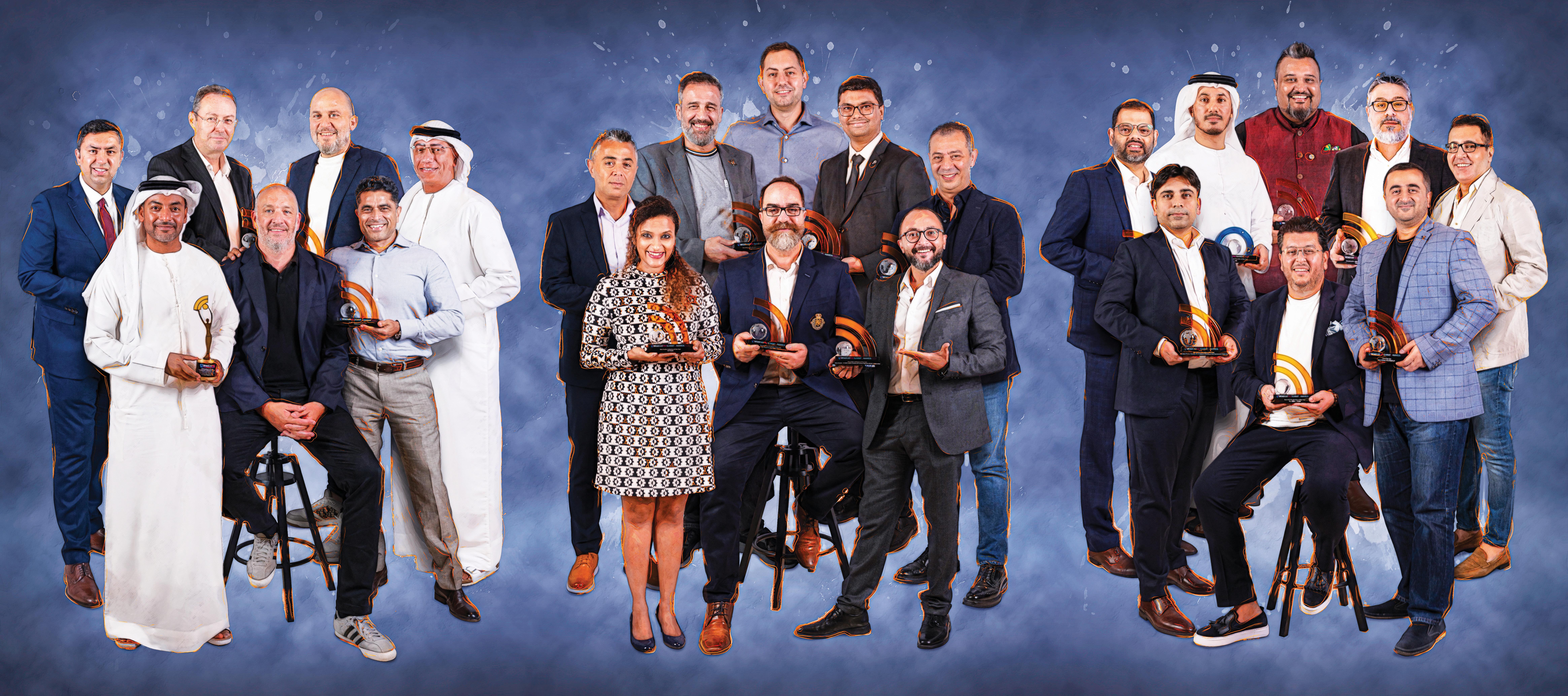



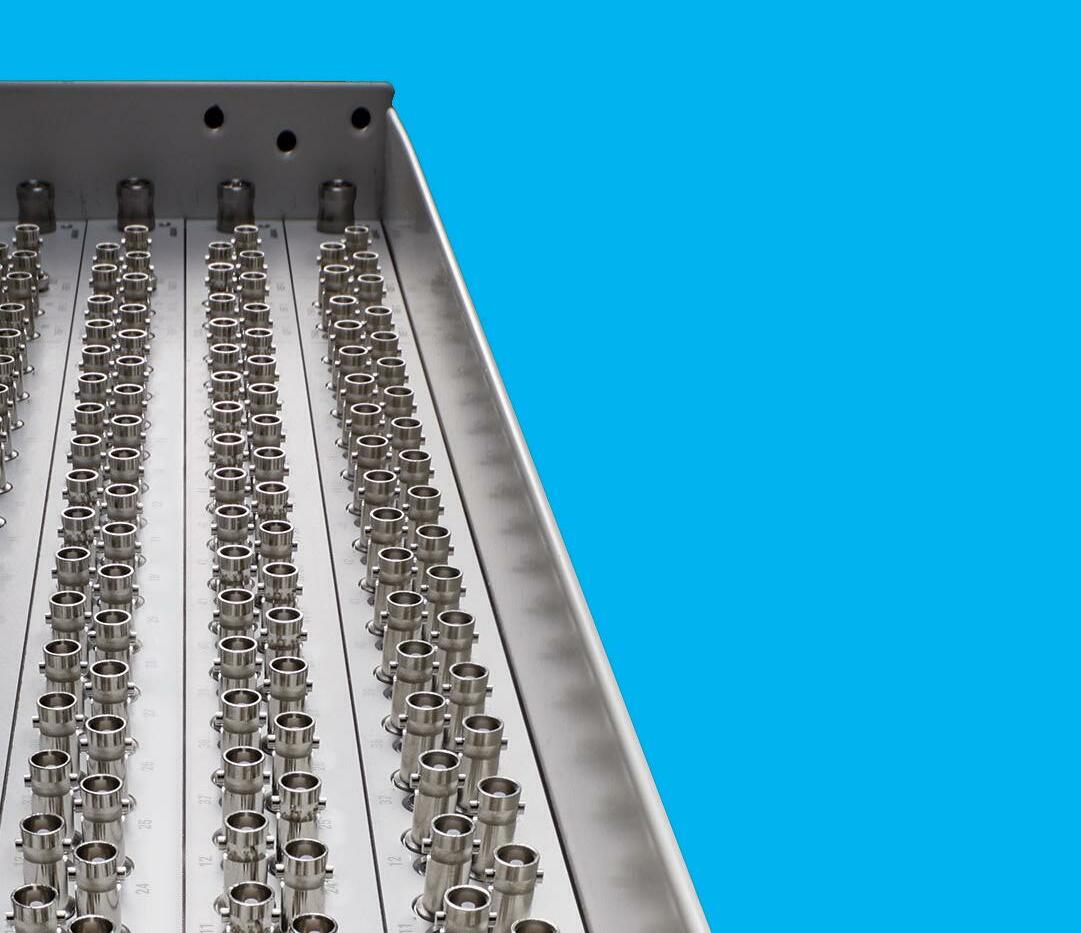






















THE SKY IS THE LIMIT. lawo.online/edge-video HYPER-DENSITY SDI/IP CONVERSION AND ROUTING PLATFORM 25/100GbE | 192 I/O (HD-BNC) per 2U | LICENSE-BASED







LAWO.COM CLOUD-NATIVE MANAGEMENT PLATFORM FOR IP-BASED MEDIA INFRASTRUCTURES HOME NMOS IS-04/05 | Built-in DHCP-Server | Built-in DNS lawo.com/products/home-solution/
raz.islam@cpitrademedia.com +971 (0) 4 375 5471 Managing
Vijaya Cherian vijaya.cherian@cpitrademedia.com +971 (0) 4 375 5472
Shiyas Kareem shiyas.kareem@cpitrademedia.com +971 (0) 4 375 5474
EDITORIAL
Editor
Vijaya Cherian vijaya.cherian@cpitrademedia.com +971 (0) 55 105 3787
Aelred Doyle
ADVERTISING
Group Sales Director Sandip Virk sandip.virk@cpitrademedia.com +971 (0) 50 929 1845 +44 (0) 7516 993 862
DESIGN Art Director Simon Cobon
Designer Percival Manalaysay

MARKETING & EVENTS Events Executive Minara Salakhi minara.s@cpitrademedia.com +971 (0) 4 433 2856

Social Media Executive Dara Rashwan dara.rashwan@cpitrademedia.com +971 (0) 4 433 2856
CIRCULATION & PRODUCTION
Data & Production Manager Phinson Mathew George phinson.george@cpitrademedia.com +971 (0)4 375 5476

DIGITAL SERVICES


Abdul Baeis Umair Khan
FOUNDER
Dominic De Sousa (1959-2015)
Published by
The 12th edition of the BroadcastPro Summit and Awards concluded successfully last month. We hosted more than 250 delegates during the day and 230 during the gala awards in the evening. What was most rewarding was that we had close to pre-Covid numbers in terms of attendance, despite several new related events having popped up around the same time as ours. Fortunately, the feedback we received from the industry indicated that what made us stand out was our strong agenda and our fantastic line-up of speakers.
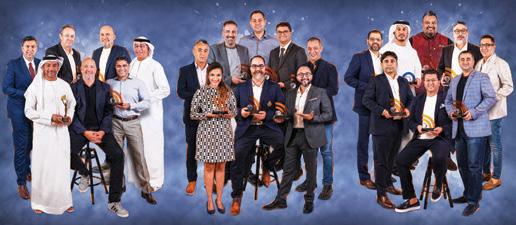
While all our speakers were movers and shakers in the industry, we also had with us Mazen Laham of Different Productions, the production house behind Dubai Bling, which was trending globally at #2 last month on Netflix. After years of talking at our panel discussions about how we can potentially create Arabiclanguage productions that can travel, it was good to see one that didn’t just travel but came out with flying colours across the globe.
We have just about scratched the surface with our regional content. As someone who has watched a lot of Hollywood, Indian and other international content before settling
down to watch Arabic productions in recent years, I can confidently say that MENA content is going places. There is a certain ennui surrounding international productions, while we see the same universal themes tackled innovatively and with cultural finesse in Arabic dramas. It's our turn to shine and we shall. Likewise, although we are often playing catch-up in the world of tech and that may seem to have put us at a disadvantage, this has actually changed in our favour, as MENA engineers have the opportunity to work with greenfield projects and deploy the latest technology without having to worry about legacy equipment. We live in a beautiful period of time when the Arab world is creating history across different verticals.
This issue of BroadcastPro covers some of the panel discussions we hosted on the day, with more coming in the next issue. It is also a proud celebration of the innovators and disruptors in our industry. Happy reading!
3 December 2022 | www.broadcastprome.com | PROINTRO
www.facebook.com/BroadcastProME BroadcastProME Let’s create a vibrant online broadcast community! RAISING THE CURTAIN: On this month's cover… Winners of the BroadcastPro 2022 awards. Subscribe online at: GROUP Managing Director
Welcome Vijaya Cherian, Editorial Director @BroadcastProME
Raz Islam
of Finance & Business Operations
Partner
Director
Sub Editor
The publisher of this magazine has made every effort to ensure the content is accurate on the date of publication. The opinions and views expressed in the articles do not necessarily reflect the publisher and editor. The published material,
editorials and all other content are published in good faith. No part of this publication or any part of the contents thereof may be reproduced, stored or
in any form without the permission of the publisher in writing. Publication
©
adverts,
transmitted
licensed by Dubai Development Authority to CPI Trade Publishing FZ LLC. Printed by Printwell Printing Press LLC. CPI Trade Media. PO Box 13700, Dubai, UAE. +971 4 375 5470 cpitrademedia.com
Copyright 2022. All rights reserved.
MKE 400 Upgrade your sound.
Sometimes, good just isn’t good enough. Enter the MKE 400, an on-camera shotgun microphone that combines portability and performance and sheds a whole new light on the way we capture audio for our video. Features that were traditionally accessories—like a windscreen and shock-mount—are now fully integrated and perform better than ever, freeing up space in your camera bag and on top of your camera itself.



#CreateMore
www.sennheiser.com/mke-400
Inside this issue
07 NEWS
Netflix and MEMI to offer four Arab writers $30K grants; MBC plans to go public; Rise Studios inks big deal with Lagoonie Film Production; Tarjama selects SubtitleNEXT and NEXT-TT for localisation projects; and more


14 BROADCASTPRO SUMMIT
The BroadcastPro ME Summit served as the perfect forum to share market intel
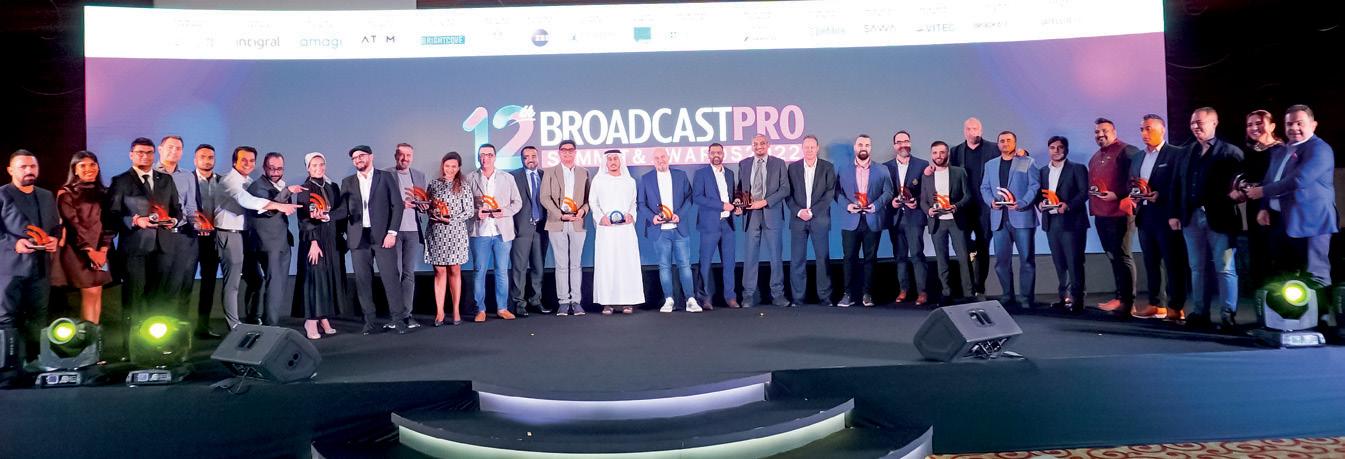


15 HOW TO ATTRACT MORE VIEWERS – OTT STRATEGIES
From niche content to datadriven personalisation, streaming players discuss a variety of tactics to bring in new audiences
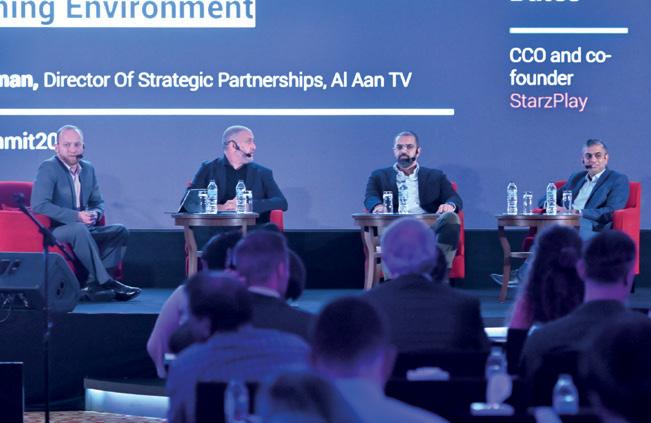
20 LIVING THE STREAM
OTT experts explore how tech has shaped the development of streaming, and its evolution
26 HOW THE TECH BLUEPRINT IS EVOLVING IN BROADCAST
Industry practices and tech are constantly evolving in broadcast facilities to accommodate new market needs. CTOs explore new market trends 32 BROADCASTPRO AWARDS
The award-winning disruptors and innovators this year

42 VIRTUAL PRODUCTION – 7
Debunking some misconceptions about virtual production 46
GUEST COLUMN
The metaverse will change how we connect with each other on multiple levels, says José Somolinos

December 2022
December 2022 | www.broadcastprome.com | PROCONTENTS 5
07 15
TARJAMA INVESTS IN NEW TECHNOLOGIES HOW TO BRING AUDIENCES TO OTT? EXPERTS DISCUSS TECHNOLOGY AS AN ENABLER FOR STREAMING CTO S ON TECHNOLOGIES THAT SHOULD BE ON A BROADCASTER’S ROADMAP HONOURING THE WINNERS OF THE BROADCASTPRO 2022 AWARDS 26 46 42 BUSTING MYTHS IN VIRTUAL PRODUCTION HOW WILL THE METAVERSE IMPACT LIVES? 20 32
DISTRIBUTED IP VIDEO NETWORKS








IP
Miniature UHD, 3G, HD Processing and Gateway frame Ideal for remote utilization of MediorNet IP Apps, such as the IP MultViewer and JPEG-XS Apps Installation
to signal sources and destinations, e.g. mountable
a screen
camera. SMALL BIG FORM FACTOR IMPACT www.riedel.net /VIDEO
IP
• Highest-density HD/3G gateway solution with up to 96 video signals per RU • Ideal for your gradual IP migration path • No extra frame for gateway processors saving valuable rack space and cabling CORE IP NETWORK SOLUTION • High-density, versatile media processing frame for UHD, 3G and HD • Save rack space; no leaf switch required • IP to IP processing, encode/decode and IP gateways VirtU 32 MuoN B SFP
48-S MuoN A SFP
STANDALONE
CONVERTERS
close
at the back of
or next to a
INTEGRATED
GATEWAYS
VirtU
MediorNet IP solutions are deployed in a variety of production environments around the globe.
rack-mounted in the engine room or locally installed in the studio or remote production location, MediorNet IP solutions provide the benefit of
Form Factor technology. MediorNet IP brings a high degree of flexibility to productions and a
of scalability to production infrastructures.
6B & 3B • • •
Whether
an incredible Small
high degree
FusioN
Netflix and MEMI to offer four Arab writers $30K grants
developed stories to Netflix.
Deana Nassar Fernandez, Netflix Grow Creative Manager for MENA, said: “Together with our creative partners, we want to do more to invest in and empower those in the industry and those on the cusp of breaking through. This partnership is an important milestone in helping us identify the next generation of writers from the Arab world.”
Netflix and Middle East Media Initiative (MEMI) have teamed up to offer four writers from the MEMI summer programme a grant of $30,000 each to help further their creative projects.

Every year, MEMI identifies a dozen or more mid-career and up-and-coming writers from the region and invites them to Los Angeles for five weeks to workshop their show ideas in a writers room facilitated by a professional American showrunner.
As part of its partnership with MEMI, Netflix has selected four writers from this cohort – Sultan Tamer
and Summer Shesha (Saudi Arabia), Ahmed Essam Ali Elsayed (Egypt), and writing partners Karim Ariqat and Mohammad Ali Al Nablsea (Jordan), offering them a one-time grant to complete their projects.
The writers will be given six months to use the funds, whether to assemble a writers room, extend their stay in the US to work with MEMI instructors to hone their series, or hire a Netflix-approved consultant to advise on the continued development of their series.
At the end of the term, the writers will pitch the fully
Hisham Fageeh, Head of MEMI, added: “What makes both MEMI and Netflix MENA unique is their access to top global resources, combined with the expertise of their Arab executives, many who come from grassroots movements of the creative economy. There is no shortage of good stories or storytellers back home, it just comes down to the method of cultivation. The School of Cinematic Arts at USC was open to an interpretation of its pedagogy to fit the needs and cultural contexts of the Arab world, and we are finally seeing the fruits of this beautiful partnership.”
Yspot and JBM Studio to create youth podcast incubator
Yspot has partnered with creative and multimedia production hub JBM Studio to launch a youth podcast incubator programme in the UAE. After a response from the pilot programme
saw 28 students dive into learning about the world of podcasting and production, Yspot is now open to applications for the second series from people aged 16 to 25.
The eight-week
incubator programme will teach students everything about the podcasting world, from concept creation to presenting. Each week participants will be guided through in-depth
more
added
size of
modules that teach them how to develop ideas, build story narratives, operate production technology and produce.
The course will commence on January 13, 2023.
7 December 2022 | www.broadcastprome.com | PRONEWS
Netflix and MEMI teams with the writers.
MENA broadcast network MBC Group is reportedly working with HSBC Holdings Plc and JPMorgan Chase & Co. on an initial public offering in Riyadh, according to a Bloomberg report which stated that the listing could come as early as next year.
Citing sources who were familiar with the plan but did not want to be identified because the information had not yet been made public, it said
banks may be
but specific details such as the
the IPO, the valuation and the timing were not yet clear.
The Saudi Arabian government presently owns a 60% stake in MBC Group, with the rest held by founder and Chairman Waleed Al-Ibrahim.
MBC Group plans to go public
Turkey’s Haber Global streamlines workflow with Cinegy Capture PRO
New Turkish service Haber Global has deployed Cinegy Capture PRO to create a futureproof acquisition and transcode workflow. The broadcaster is expanding the channels and live feeds it offers to meet growing demand for its content. Its new 24-channel Cinegy Capture PRO not only supports its current needs but offers the additional capacity to grow.
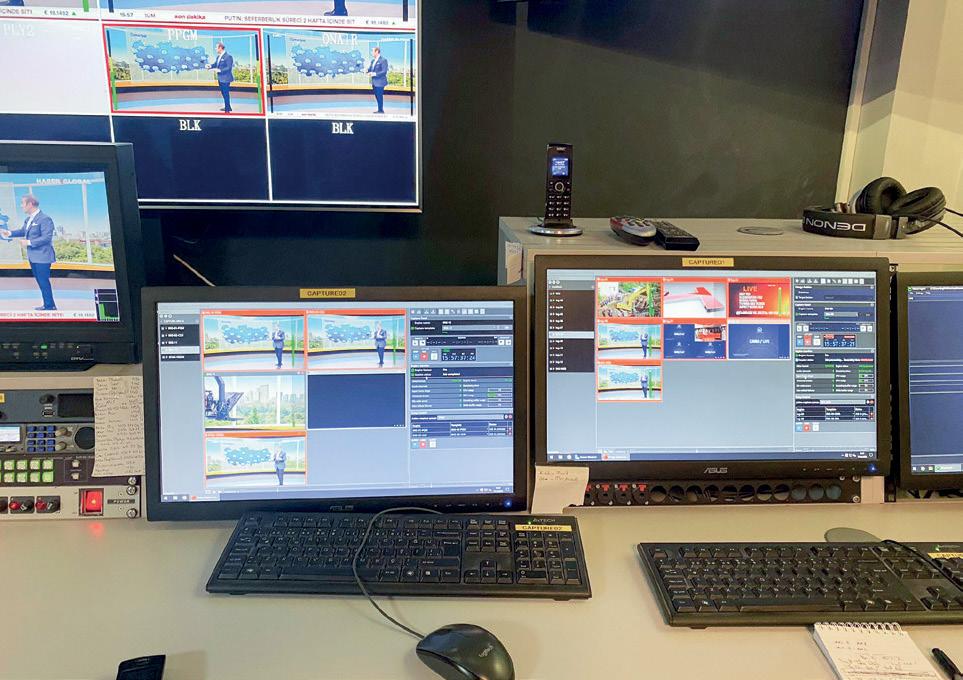
Cinegy Capture PRO provides Haber Global with a simple-to-install, flexible and reliable ingest resource, with shared access for multiple users. The solution combines ingest and transcode functions in a single system, simultaneously producing video files and web proxies in multiple formats ready for editing.
Önder Yavçin, CIO at
At Haber Global in Turkey.
Haber Global, said: “Our viewers want to get more of the news stories impacting them, and we knew that our ingest capabilities had to increase to handle more cameras and programmes, and outsource resources to meet their needs. We wanted to be able to record 24 channels and do this with
as few servers as possible. Cinegy Capture PRO met all our needs. Not only do we now have reliable, futureproof ingest capability, but our team can work more efficiently and collaboratively than in the past.”
Cinegy Capture PRO delivers a cost-effective solution for centralised
ingest built from the ground up to operate as a completely independent ingest tool. It can be used as an application by any user on the network due to the simple yet powerful cross-platform control client. It runs on a standard PC with the addition of one or more SDI cards.
Murat Küçüksaraç, COO of Cinegy AS, said: “Haber Global is an innovator and brings a new breath of fresh air to the Turkish media sector. We were incredibly pleased to work with them on this project to support their growing infrastructure.
Cinegy Capture PRO gives customers a radical take on the traditional acquisition and transcode systems and creates fast, intuitive, collaborative workflows in an easy-to-deploy system.”
Rise Studios inks multiple-picture deal with Lagoonie Film Production
Rise Studios, an entertainment company driving investment in content from regional markets, has signed a multiple-picture deal with Lagoonie Film Production, an Egyptian company founded in 2017 by producer Shahinaz Elakkad. The companies will develop, produce and theatrically release multiple films over the next two years in a diverse mix of genres
including rom-com, drama and comedy, starring blockbuster talent.
Based in Dubai Media City, Rise has already invested in companies across Egypt, Saudi Arabia, Beirut, the UAE and the US, including Partner Pro, Different Productions, ASAP, Black Typhoon and Watan Network. Lagoonie has produced awardwinning films including Feathers by Omar El
Zohairy, which won four global awards including the Grand Prize and the FIPRESCI award at the Cannes Film Festival.
Production of the first film began in October: a family comedy titled Careful what You Wish for (Saaet Ejabah), written by Mohamed Kheidr and Shereen Alaa and directed by Mostafa Abou Seif. It features Selim Mostafa, a child actor known for his
role as Younis in the TV series WHY NOT?! (LEEH LAA?!), as well as Mourad Makram, Ghada Adel, Naglaa Bader and a special appearance by Sawsan Badr. It is scheduled for release in early 2023.
Further feature films will include a 2024 romantic drama based on the Egyptian novel Anf wa Thalathat Ouyoun by Ihsan Abdel Quddous, adapted by Wael Hamdy.
8 | www.broadcastprome.com | December 2022 PRONEWS
Tarjama selects SubtitleNEXT and NEXT-TT for localisation projects
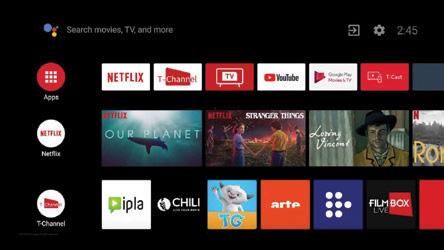
Dubai-based Tarjama, a language technology firm, has selected Profuz Digital’s SubtitleNEXT and NEXTTT platforms to optimise subtitling, translating and localisation services, as well as reinforce security and boost its automatic voice recognition and machine translation services in order to manage costs.
Tarjama founder and CEO Nour Al Hassan said: “Tarjama uses a hybrid model that controls the speed of our proprietary technology. Paired with the accuracy and creativity of expert linguists,

it enables subtitlers to deliver quality content to companies at phenomenal speed and efficiency. The fact that the Profuz LAPIS technology within NEXT-TT allows companies of all shapes and sizes to access projects at any given time, from anywhere, and facilitates collaboration among clients and staff was a major draw. NEXT-TT can also be customised to produce targeted management and efficient workflows.”
Profuz LAPIS will help Tarjama to control its processes seamlessly, from acquisition, classification,
including audio, videos, images, subtitles/captions, documents, news and projects are managed through multiplatform content delivery capabilities which extensively synchronise the entire content production workflow and distribution chain.
Al Hassan added: “After extensively researching many cloud-based subtitling and workflow management platforms, we made the decision to invest in Profuz Digital’s SubtitleNEXT and NEXT-TT platforms, as they fulfilled all our requirements and ticked all the right boxes.”
9 December 2022 | www.broadcastprome.com | PRONEWS
storage, search and postproduction to media content distribution. Datafiles
CEO Nour Al Hassan.
Galactic Entertainment launches cinematic multiverse
Galactic Entertainment, an entertainment studio headquartered in the UAE, will use blockchain technology to create innovative, immersive and disruptive experiences. Backed by global investors including Kingsway Capital and Immutable X, Galactic Entertainment is aiming to become a major player in the Middle East’s gaming space with its debut project, PlanetQuest.
The vision is to build the first cinematic multiverse
alongside a vibrant community that participates in its conception from the start. Community members and fans are treated to the works of renowned writers, video game developers and artists who have previously worked on IPs from Marvel and Star Wars to Game of Thrones and are now laying the foundation for PlanetQuest.
Loren Roosendaal, founder and Chairman of Galactic Entertainment, said: “With the games and esports sector

ROE Visual expands focus on MEA market with new appointment
ROE Visual has appointed Khalid Sweidan as Vice President of Sales in the Middle East and Africa, as part of its expansion. The Arabic-speaking sales executive will oversee MEA revenue growth. The subsidiary ROE Visual MEA sales office will offer regional support and service, enhancing its growth opportunities, service and customer satisfaction.

OSN has announced the launch of OSNtv box, an all-in-one product that will bring together OSN exclusive and curated live TV channels, streaming and free-to-air entertainment across a single Android device.

It has enhanced search functionality, allowing viewers to search by voice alongside an advanced TV guide for rapid and
accurate content discovery. It can also stream content from multiple OTT platforms including Prime Video and YouTube, as well as provide access to video and music apps.
OSNtv box comes with a universal remote to control live TV, streaming services and TV power, source and volume. It also provides 24/7 customer support across multiple platforms.
growing in the Middle East, we are thrilled to establish our headquarters here in the UAE. The country is becoming increasingly interested in developing homegrown games, with over 4m users expected by 2027.
Saudi Arabia is also a major market, with 70% of KSA’s population under 30 years of age and approximately 20m gamers in the country.
Both markets are key contributors to the region’s growth in the gaming space.”
MBC Group has become the latest member to join the Alliance for Creativity and Entertainment (ACE), a coalition dedicated to protecting creative content.
Local insights shared by MBC Group indicate hundreds of websites pirate the network's content daily, including but not limited to Arabiclanguage and locally produced films, series and programmes, as well as international content. Pirates aggregate content from multiple sources in the region and offer packages that cost as little as $15 annually.
10 | www.broadcastprome.com | December 2022 PRONEWS
MBC Group joins anti-piracy organisation
OSN announces new box which brings TV and apps together
Loren Roosendaal is founder and Chairman of Galactic Entertainment.
Khalid Sweidan.
Dubai International Content Market concludes successfully
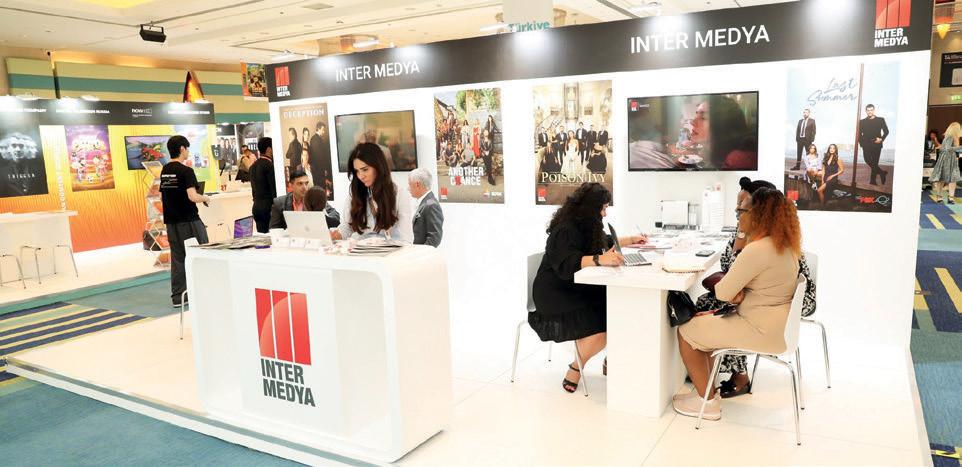
“There were more than 800 prescheduled meetings booked before the start of DICM.”
Basebone expands MENA content offering
800 meetings
The Dubai International Content Market hosted around 600 participants at the Jumeirah Beach Hotel Conference Centre last month. The event is targeted at content producers and distributors looking for development opportunities
with broadcasters and other platforms. DICM organisers also announced the launch of their E-Content Market, an online trading platform for buyers and sellers of content.
Eng Anas Al Madani, Vice Chairman and Group CEO of INDEX Holding, stated:
Pakistani channel Aan TV closed a deal with producer HA International for the broadcast of Iranian show Jayran. Raheena Irshad, Head of Programming at Aan TV, said: “The channel will dub the show in Urdu and air it in the upcoming 2023 season. It will be a visual treat for Pakistani viewers and a new market will open up for Iran’s producers and broadcasters.”
The next edition of DICM will be held at Madinat Jumeirah on November 23 and 24, 2023.
FunAsia Films launches in UAE and US
As part of its MENA expansion strategy, OTT digital media services provider Basebone will significantly boost its Arabic-focused content within its flagship product line-up. In H1 2022, it accumulated more than 7m signups in its top markets by leveraging data and technological innovations. This was growth of 43% year-onyear, with a projection to reach 18m by the end of the year.
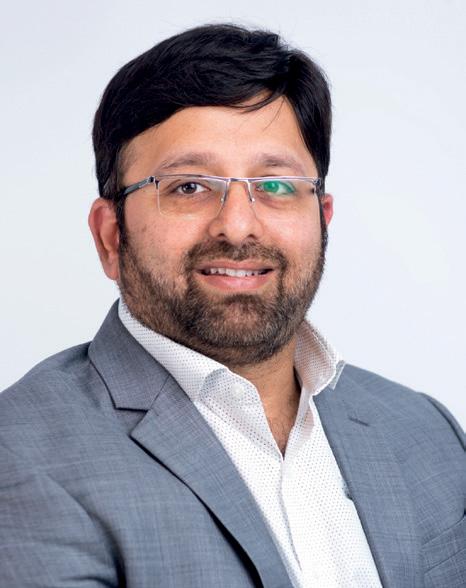
Al Arabiya News Network and MBC Media Solutions (MMS), the commercial arm of MBC, have launched Akthar to expand its digital content offering for the region’s digitalsavvy consumers. Eight social media channels in a 360 immersive digital experience will feature eight different shows covering lifestyle, travel, automobiles, health and politics, among other things.
FunAsia Network has entered into the film distribution space in the UAE and the US by launching FunAsia Films, which will debut in the UAE with Bollywood horrorcomedy Bhediya (Wolf), starring Varun Dhawan, Kriti Sanon and Deepak Dobriyal. UAE promotion for the film was executed with an expansive campaign featuring
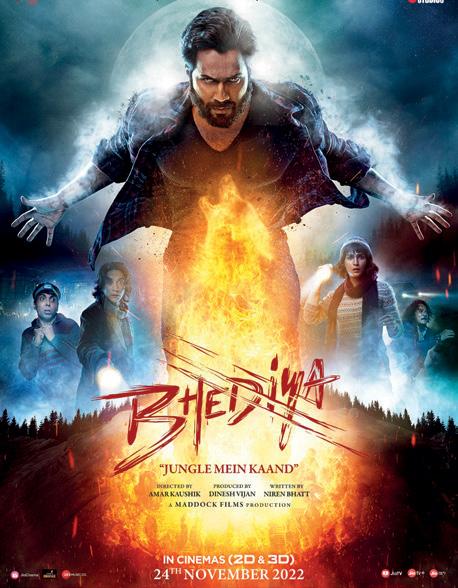
a line-up of activities exclusively with BIG 106.2, an Asian radio station. With a press conference at Reel Cinemas Dubai Mall, a visit to City Centre Deira, an afterparty at PAPA Dubai with the cast and the team and a trailer projection on the Burj Khalifa last month, the team ran a massive marketing campaign.
Michael Holmqvist, CEO of Basebone, said: “We are very excited over how the MENA expansion has been developing positively, and our local content strategy has gone above and beyond expectations. We are striving to support the local community by allowing individual creators to monetise their content on our platform. We are confident that this move will inspire regional creators to make and share meaningful content and in turn help the brand to establish itself not just as a leading service provider in the region, but as an enabler in the local creator economy.”
11 December 2022 | www.broadcastprome.com | PRONEWS
Al Arabiya and MBC Media Solutions launch digital content brand
FunAsia Group CEO Sam Thakkar.
More than
were booked before the start of the event, according to Eng Anas Al Madani, Group CEO of Index Holding.
Snap selects four regional developers to create AR lenses for football fans



Snap has commissioned four regional AR developers – Mohamad El Asmar from Oman, and Maha Aldosary and friends Ibrahim Boona and Fahad Mutlaq from Saudi Arabia – to create AR lenses for football fans, for an immersive experience during the World Cup. The collaboration will showcase their technical and creative potential to football fans across the world.
Through his three lenses, Mohamad has captured fan anticipation in the build-up to the games, encouraged supporters to join the action through predictions, and kept the spirit of
the games long after the tournament by creating and sharing football memories. Maha's lenses capture the competitive nature of sports, celebrating the diverse cultures of participating countries and highlighting the colourful national kits. Ibrahim and Fahad are inspired by the excitement of the games, with their lens depicting the fun atmosphere in stadiums.
TOD and Makana 360 to analyse consumer behaviour
Makana 360, a data-driven communications consulting firm, has signed an agreement with TOD, beIN Media Group’s OTT platform, for a comprehensive consumer behaviour analysis during the 2022 World Cup streamed exclusively in MENA on TOD.
Using an AI-enabled technology called Buraq, Makana 360 will conduct massive brand listening and monitoring activities to understand the digital presence and performance of TOD. Using its interface, it will analyse millions of
public online conversations across social media, news websites, blogs, forums and offline media in 187 languages including Arabic. The analysis will reflect real-time fan sentiment towards their teams at all stages in the tournament, as well as predict match results.
John-Paul McKerlie, VP for Marketing and Sales at TOD, said: “TOD is all about extending an immersive streaming experience for our viewers. Our partnership with Makana 360 is a step further in this
direction, wherein we will be leveraging their unique scoring tool that analyses millions of public online conversations to predict football match results. These will be shared with viewers on a real-time basis. We will further use the consumer analysis provided by Makana 360 to enhance the platform and our offerings for future consumption.”
Abdurrahman Al-Husami, CEO of Makana 360, added: “We are proud to collaborate with TOD to help it stay ahead in a competitive market and rapidly changing digital landscape. Analysing consumer behaviour using social listening and AI-enabled technologies has become a crucial and integral part in helping brands understand consumers’ conversations about their products and services, and to meet their needs and demands.”
Roxy Cinemas brings World Cup to big screen
Roxy Cinemas will screen all World Cup matches live across its premium Dubai locations, including Roxy Xtreme at Dubai Hills Mall. Tickets are available for purchase from the venues, online and through the Roxy Cinemas app. Auditoriums can also be booked for private screenings, corporate events and group bookings.
Elife TV offers World Cup packages
UAE football fans can watch the World Cup exclusively on beIN Sports’ dedicated World Cup channels through eLife TV. The package comes bundled with the beIN Premium package, which offers 57 additional sports and entertainment channels. ELife TV subscribers can subscribe or upgrade to the World Cup package through a self-service option called Subscribe on Screen.

12 | www.broadcastprome.com | December 2022 PRONEWS
TOD, as part of beIN Media Group, holds the streaming rights to the 2022 World Cup in Qatar.
BROADCASTPRO SUMMIT: SHARING MARKET INTELLIGENCE
The BroadcastPro ME Summit is an expertly-curated discussion forum that provides keynote market intel designed to empower business decisionmaking and innovation. This edition includes the OTT and tech discussions, while the New Year issue will summarise the production and CEO panels

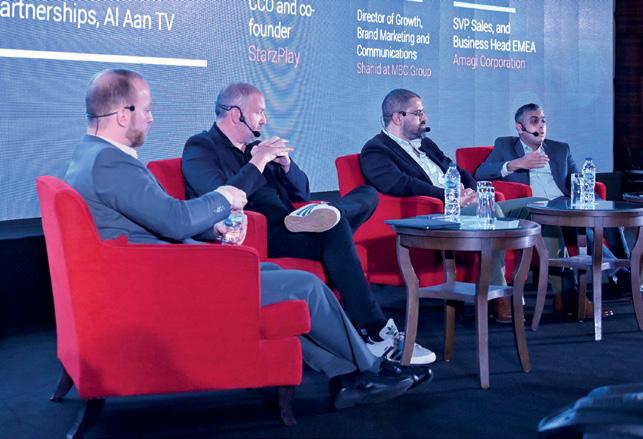


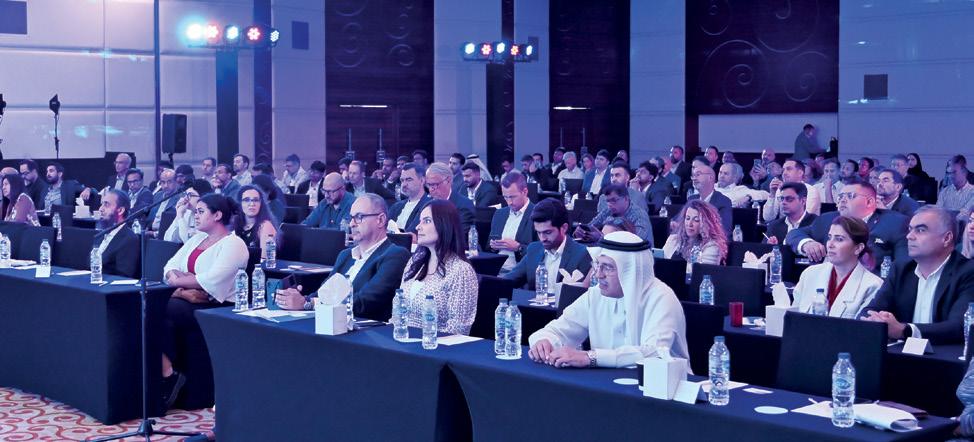


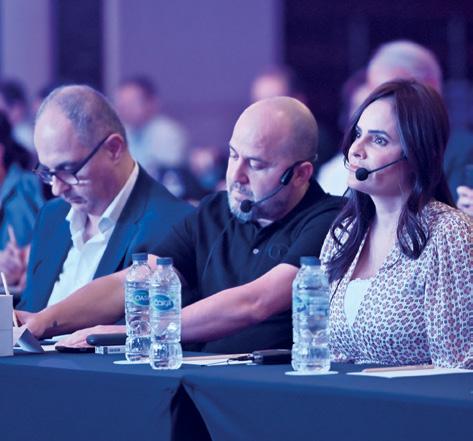




14 | www.broadcastprome.com | December 2022 PROOTT
HOW THE MENA STREAMING SECTOR IS TACKLING THE VIEWERSHIP CHALLENGE

From niche content to data-driven personalisation at every level, streaming players are using a variety of tactics to bring in new audiences. Delegates at the BroadcastPro ME summit were given a masterclass during a special panel discussion. Keith J Fernandez sums it up
The recent proliferation of OTT services around the world means streaming players can’t just differentiate themselves against linear services alone. Rather, the crowded marketplace means it’s harder than ever for streamers to stand out.
That’s equally true in the MENA region, where streaming services have seen subscriber and viewing numbers increase by over 50%, with unique viewership rising 100%, said Omar Othman, Director of Strategic Partnerships, Al Aan TV, who moderated a panel discussion on ways to grow audiences in a competitive streaming environment, as part of the BroadcastPro ME summit last month. The other panellists were Danny Bates, Chief Commercial Officer and co-founder, StarzPlay; Ahmed Qandil, Director of Growth, Brand Marketing and Communications, Shahid at MBC Group; and Sri Hari, SVP Sales and Business Head EMEA, Amagi Corporation.
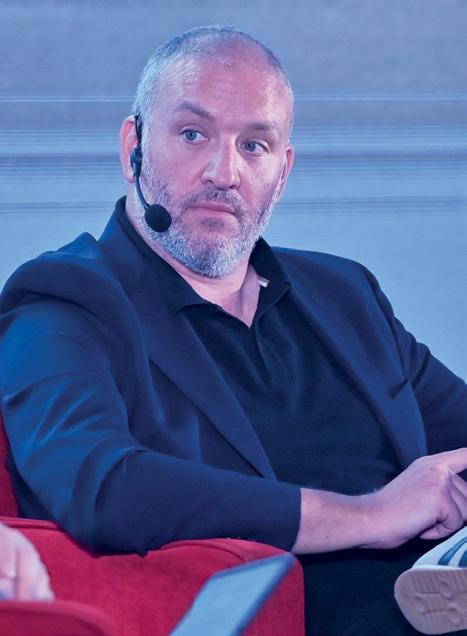
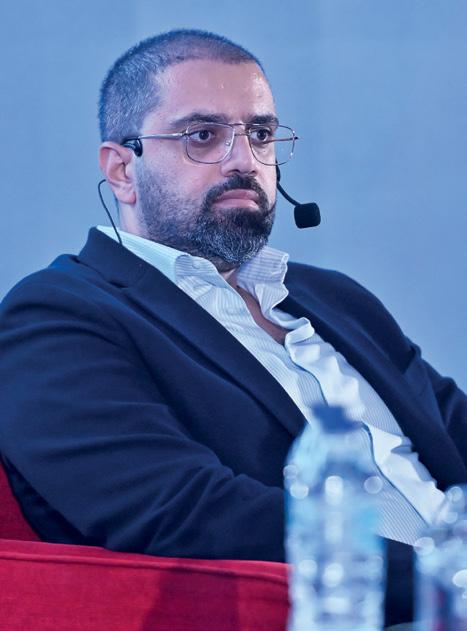

Here are some of the major takeaways.
Use niche content to bring in new audiences
Data-driven algorithms on social media and search engines have made it easier to find content that suits individual preferences. Because niche audiences are loyal, catering to those preferences can help OTT players drive traffic to more broad-based content.
At StarzPlay, sporting events such as the Cricket World Cup and the Italian Serie A football league provide that niche hook. Traffic and revenues from sports programming can then be redirected to other areas of the business. Cost per acquisition (CPA) differs for sports and entertainment, and capitalising on the former can support the latter.
“Sports has been key for us, for two reasons – subscriber numbers and revenue growth,” Bates said. “Sport is also bringing customers to the StarzPlay platform and has been an invaluable investment to actually get the
15 December 2022 | www.broadcastprome.com | PROOTT
StarzPlay brand out there.”
High-profile games such as Milan versus Juventus or Roma versus Lazio drive search traffic and catering to those queries can bring in new customers, he added. “We see customer acquisition as one-fourth or one-sixth the cost on sport. And then that allows us to cross-sell our other products to those customers very effectively and to start to bring them closer to some of our entertainment products for upsell as well. It’s a nice combination.”
The streaming platform has been able to diversify its offering in recent years with original series such as Baghdad Central. Approximately 41% of all active StarzPlay viewers followed the series. But what works in one market may not work in others. Consumption differs across different regions, Sri Hari said, and broadcasters and OTT platforms may want to position their offerings in line with viewership patterns.
As a technology player, Amagi supports both the broadcast and streaming sides of the business. It works with linear networks such as Fox and CBS in the US, and
Ahmed Qandil, Director of Growth, Brand Marketing and Communications, Shahid at MBC Group

with AVOD and FAST services in several major markets. “Consumption differs across genres depending on the region. In North America, we’re seeing news as a hero genre. Live news especially has a lot of viewers. In EMEA and APAC, by comparison, documentaries seem to
take the lead while news is tapered down in terms of consumption, ranking equally with documentary content. We are also seeing singlebranded content channels doing extremely well with FAST services.”
Combine content, commercial and tech strategies to improve stickiness
A key challenge for OTT apps is retention and ’stickiness’ – being engaging enough to keep users coming back for more. If app users find they aren’t using a service, they may unsubscribe. For channels that depend on advertising, there’s the added issue of keeping viewers watching long enough for the ads to be served. Stickiness tactics are therefore essential to keep people engaged and on the platform, Othman said. He offered the example of Netflix’s five-second countdown between episodes. “By the time you’re done deciding whether to stay or switch off, the next episode starts and you’re stuck for another hour anyway. And you’re up late, late at night.”
The panel agreed that content consumption differs across regions, and OTT platforms will want to position their offerings in line with viewership patterns.

16 | www.broadcastprome.com | December 2022 PROOTT
“When it comes to winbacks, they’re mainly driven by content. Content plays a big role in retention. If customers find something that’s interesting for them to watch, they will either take a decision to wait and watch it or maybe leave and come back”
Understanding user behaviour can reveal ways to promote discovery and retention, Sri Hari said. To offer viewing comfort in an era of scrolling fatigue, providers can create a “FAST TV front porch” with a linear set of channels in front of a subscription service. With this front porch, consumers can see a list of curated FAST linear channels on the SVOD app. This allows (a) paid subscribers to consume content immediately, without having to endlessly scroll across the SVOD library; and (b) non-subscribers to consume a set of free content (as linear TV channels) as a precursor to signing up for the SVOD service. This ready-toconsume curated linear TV service tactic has driven increase in viewing hours by as much as 50%, he said.
An analysis of business reports from leading subscription providers shows the importance of a free subscription tier in keeping viewers engaged and consuming more content, Sri Hari said, offering a big-picture view of what streamers must consider on this front. “We see this as a network business. You need content, you need viewership and you need revenue (subscription and advertising revenue, as with broadcast TV). All three must come together so the business grows as a network for all stakeholders.”
One example of how different elements of the network support each other is average revenue per unit (ARPU), which is higher for advertising tiers than subscription tiers. Streaming platforms may therefore want to work with a mix of both, to maximise revenue while retaining customers.
But there’s an argument for content as a retention magnet. Retaining and winning back customers first and foremost comes down to content, Qandil said. “When it comes to win-backs, they’re mainly driven by content. Content plays a big role in retention. If customers find something that’s
interesting for them to watch, they will either take a decision to wait and watch it or maybe leave and come back.”
However, with more content available, viewers have become choosier and streaming offerings need to raise the bar accordingly. Here, Qandil said, partnerships can help with acquisition.
Bates spoke of how StarzPlay uses the user experience (UX), content strategy
and payment models to drive retention. A good recommendation engine is key to enticing viewers to stay on the platform, he said, but curation can drive audiences to reconsider archival content.
StarzPlay recently used innovative curation to promote evergreen content such as Top Gun and Fight Night. Such messages can be served to consumers via in-app messaging.
Over the duration of the World Cup, StarzPlay will give its sports customers two months of entertainment content for free, both to grow audiences and as a retention tactic. A combination of technology and execution can get content in front of customers and prompt them to engage with the product, Bates said.

Drive revenue with both new tactics and established strategies OTT is one of the fastest growing segments in the broadcast sector, but competition and fragmentation could quickly become a threat to revenue streams. There are several strategies to combat the problem, panellists said.
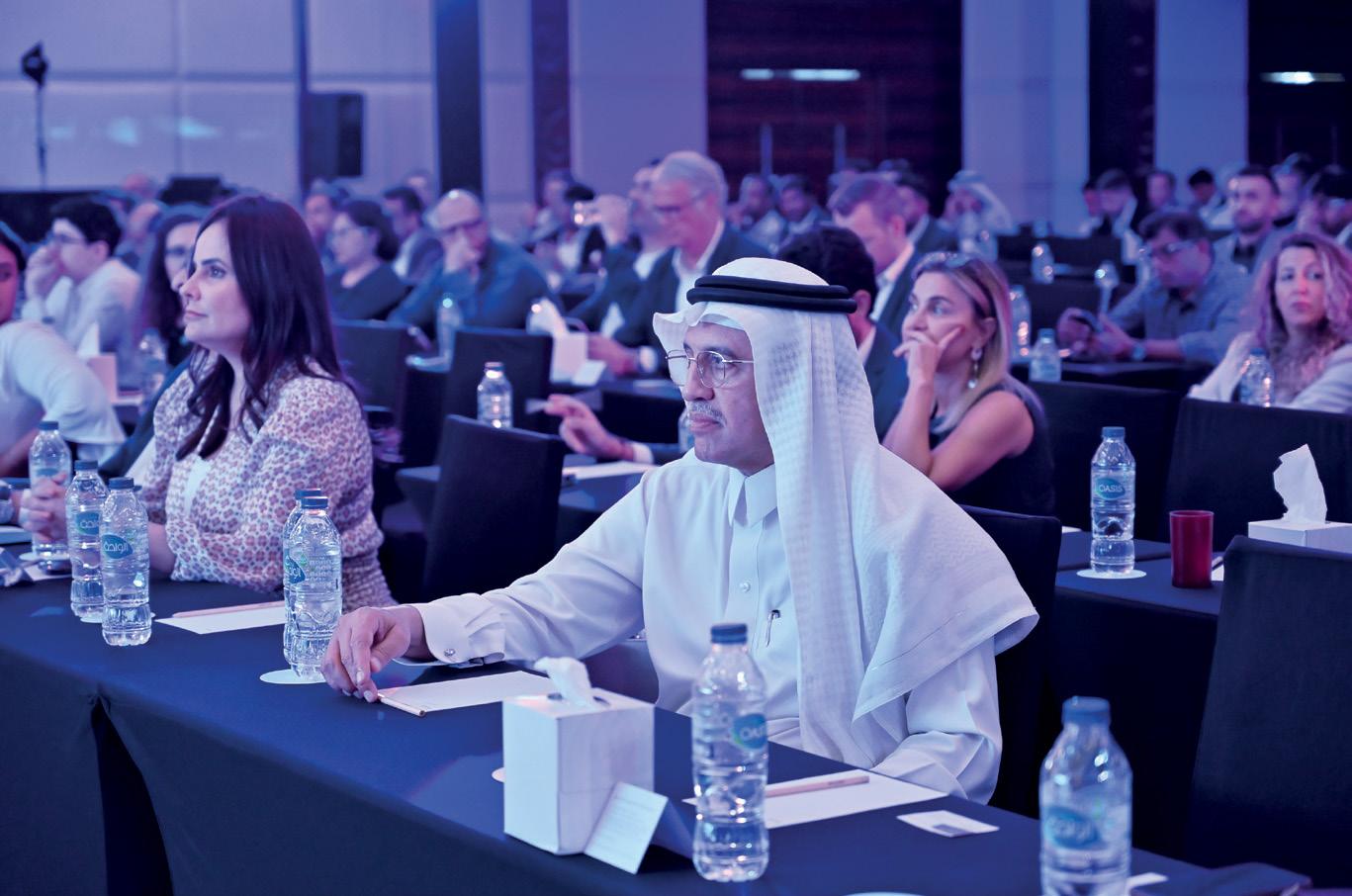
Perhaps the most straightforward approach is for streaming providers to offer tiered plans, with advertisingsupported options alongside commercial-free subscription plans. Netflix, for example, recently added an advertisingbased service, Basic with Ads.
Shahid also offers both options.
17 December 2022 | www.broadcastprome.com | PROOTT
“We look at the actors that work, the shows that work, the genres that work and use that ... in our content acquisition, our marketing and our planning, even in our billing and retention”
Danny Bates, Chief Commercial Officer and co-founder, StarzPlay
BroadcastPro ME hosted more than 250 industry professionals at its conference in Dubai this year.
Originally an advertising-supported service, it later added a subscriptionbased tier, Shahid VIP, to offer subscribers uninterrupted viewing. The tiers complement each other in a region of heterogenous viewing and spending habits, Qandil said. “The willingness to pay for different services is different.”


The streaming platform is closely monitoring the progress of its FAST offering. FAST offers a way to tap different revenue streams while surfacing archival content, he said. AVOD, on the other hand, reaches audiences with low willingness to pay, who can then be upsold into SVOD. Each complements the other.
Advertising remains the other major route to maximising commercial opportunities. Programmatic buying is now the default option, but platforms would do well to develop the direct route.
StarzPlay has a 25-strong internal sales team to represent its advertising inventory, Bates said, which has brought in more revenue than would have been possible by relying on ad platforms alone. “What we don’t want to do is just be selling our inventory on CPM, because you’re just not going to get a return on investment on a CPM level.” Having a sales team allows the brand to offer other campaign elements, such as sponsorships and digital product placements, alongside traditional commercials.
Use data to support personalisation and monetisation
Viewership data has long underscored the superiority of digital advertising in providing opportunities for customisation. As granularity improves, so too do opportunities for personalisation – at every level.
“You want to build a viewer profile and you want to do so for multiple reasons. Part of it is understanding what kind of demographic is watching the content in the first place. It’s also something you can
utilise in the advertising space,” Qandil said. “We track every profile and their behaviours and are using this information to inform advertising strategies [including] ad insertions and digital product placement.”
Data already informs nearly every aspect of business at Shahid.
“Most of our decisions today, whether on a commercial level or content level or marketing level, are data-led,” he said. “We’ve invested a lot in understanding and building the pipelines behind data. We try to analyse everything that we broadcast, even at a platform level, to understand what works, what doesn’t work.”
One example is digital product placement instead of productionbased product placement. The old-school tactic is familiar to film and TV audiences, but it remains relevant even in the digital age. While Qandil did not say what form such placement takes at Shahid, other players are seamlessly inserting digital footage into existing content, such as on billboards, storefronts or food and drink packaging within a shot. Digital product placement can also be adapted to each viewer’s individual footprint.
Technologies such as artificial intelligence (AI) are being used to create personalised data profiles of each viewer that can then be shared along the value chain, from advertisers to producers and marketers to programming teams. By looking at consumption patterns, AI algorithms can tailor programming to individual viewers, Qandil explained. The viewer receives a rich consumer experience without quality
18 | www.broadcastprome.com | December 2022 PROOTT
“We see this as a network business. You need content, you need viewership and you need revenue (subscription and advertising revenue, as with broadcast TV). All three must come together so the business grows as a network for all stakeholders”
Sri Hari, SVP Sales and Business Head EMEA, Amagi Corporation
or reliability being compromised, platforms can use the information to scale, and media owners can build channels with little or no experience.
“We believe data should be democratic,” Sri Hari said. Amagi is innovating new types of granular data models that can deliver just these sorts of insights for all stakeholders (OTT platforms, mediaowners and studios, advertisers) and even optimise content scheduling.
On the other hand, streaming platforms should guard against an over-reliance on data, cautioned Bates. “As OTT platforms we have so much return data coming back. It’s not like in the old days in the satellite industry. So why not use all that information? We look at the actors that work, the shows that work, the genres that work and use that in our thinking, in our content acquisition, our marketing and our planning, even in our billing and retention.”
“Yet there’s a place for creativity
as well. Data can maybe push you in the right direction, give you some indications, but you still need people who can read a script, can have passion for a project, might help you lead into the right project. But you still need to combine together that hardcore data with passion and gut and creativity as well, to really succeed.”
Syndicate for more revenue and new audiences
The panel closed on the issue of content
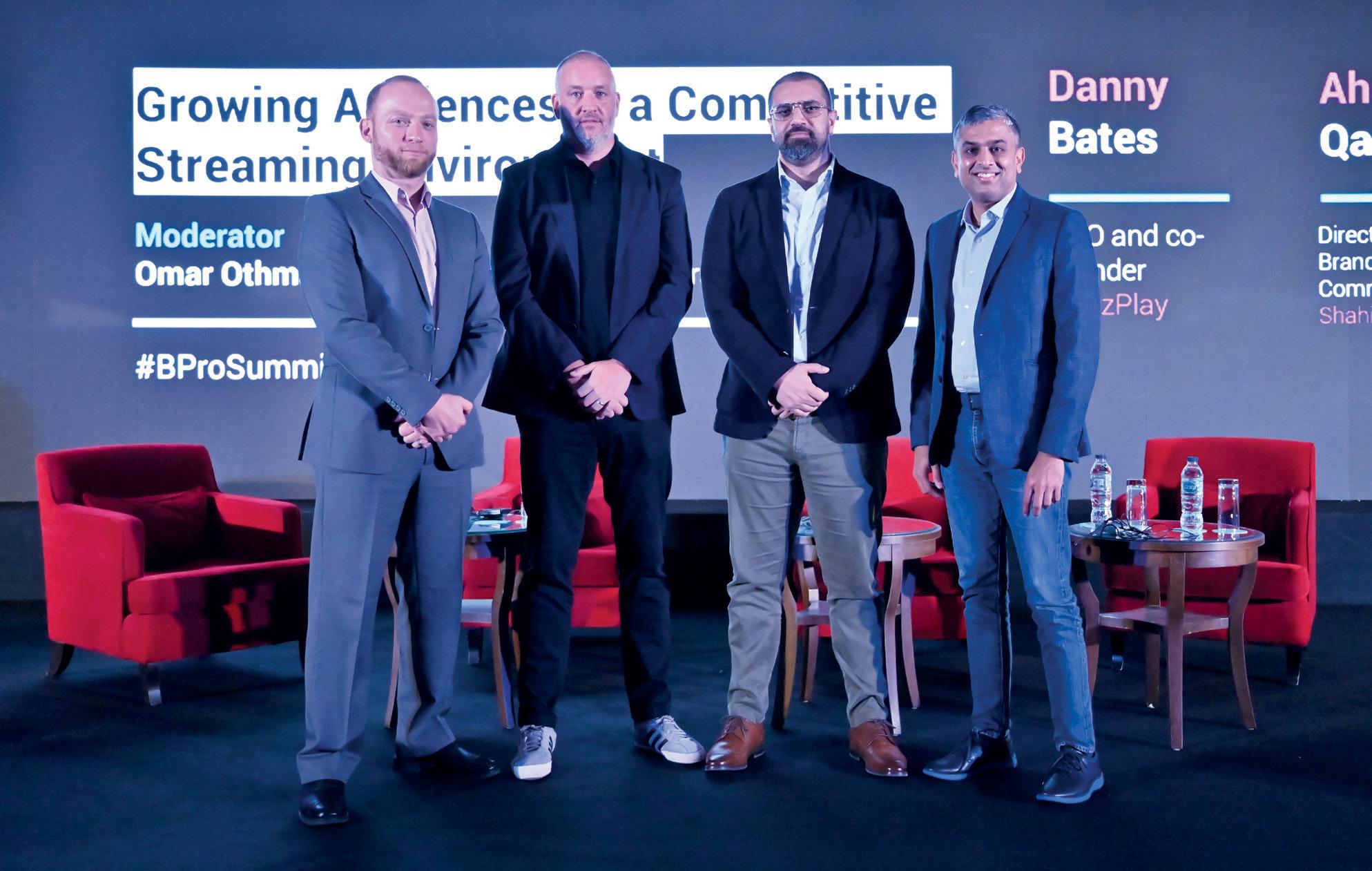
syndication and distribution. Long established as a way to monetise dormant content libraries, syndication has been used by television networks to generate new revenue by licensing airing rights to other networks. However, it can also cannibalise subscriber growth when spread too thin. Finding the right balance is crucial, the panellists agreed.
Content syndication can be used to attract audiences and drive new traffic, Bates said. An example is licensing the first season of a successful show to another platform, so that it is available around the time the second season first airs on your own platform. Such a tactic can generate interest in the original product and bring in new audiences.
Finding the right balance to avoid cannibalisation depends on each platform’s market proposition, Qandil added. PRO
19 December 2022 | www.broadcastprome.com | PROOTT
“Most of our decisions today, whether on a commercial level or content level or marketing level, are dataled. We’ve invested a lot in understanding and building the pipelines behind data”
Ahmed Qandil, Director of Growth, Brand Marketing and Communications, Shahid at MBC Group
LIVING THE STREAM
Technology and streaming have had a profound impact on each other. Streaming has become the preferred way for consumers to access entertainment because of technology’s role as an industry enabler. Not so long ago, viewing high-definition video over the internet was unthinkable because of bandwidth, speed and device limitations. With streaming services driving demand for data centre services, they will account for 87% of consumer internet traffic in 2022, according to the International Energy Agency.
But questions around infrastructure and energy aside, how will technology enable viewer acquisition, engagement and retention? Are CTOs choosing in-house technologies, managed services or hybrid solutions? How can solution providers help? Will the likes of the metaverse and blockchain affect the future of streaming? How do consumer behaviour and data analytics dictate content acquisition today?
Experts representing different aspects of the industry discussed the issue during a special technology panel at the BroadcastPro Summit last month. The panel was moderated by Chris Moore, EMEA Sales Director at online video platform Brightcove, who was joined in the discussion by Faraz Arshad, CTO of streaming platform StarzPlay; William Sharp, VP of Technology at Intigral, a major MENA digital entertainment provider; Ajay Kumar Meher, Global Practice Head, Media & New Media with


State of play
Given the dynamic nature of the streaming business, players work with a mixed landscape of technologies, from in-house technologies to managed services and, increasingly, hybrid solutions. The CTOs of both end users on the panel, Intigral and StarzPlay, said they respond to the need for innovation and agility with a hybrid approach led by dynamics such as time to market, the lifecycle of new products and staff costs.
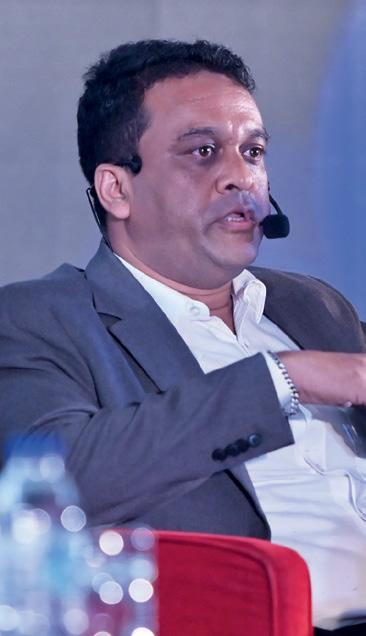
Sharp explained how the hybrid approach works for the company’s media delivery stack, with both offthe-shelf products and in-house development.
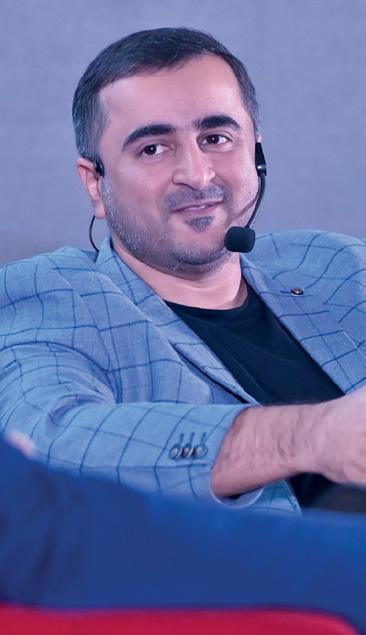

“It’s worthwhile splitting the media delivery stack and the product development stack, because they’re both very different in terms of approach. On the media delivery stack, we’ve got a very challenging environment and landscape. We’ve got over 210 live channels. We have 30,000 VODs on the platform, and we ask our vendors to deliver appliances to us so we can operate.
“It is an ongoing evolvement of that partnership with vendors. They come with a service. They help us deploy it and install it, but we stitch it together and help engineer that end-to-end platform. We have many different sources of
20 | www.broadcastprome.com | December 2022 PROSTREAMINGTECH
Tata Elxsi Limited, a major design and technology services provider; and Damien Lucas, Chief Product Officer of Ateme, a video compression and delivery solutions leader.
Technology has shaped the development of streaming, but can it keep pace with the fast-evolving needs of the industry?
content coming in. We’ve got data centres deployed in the UAE and CDNs deployed across MENA. So it has to be an off-the-shelf set-up, and engineers work with all the vendors to provide that end-to-end chain.
“When it comes to the core platform in terms of development, we have a tier-one vendor in the middle of our OTT platform. They sort out the logins, entitlements and content feeds, but where we really want to innovate and differentiate is in terms of moving into the super aggregation space. We have our own in-house development team and we set them up for a rapid development framework where we can push the boundaries and react to our product requirements.”
StarzPlay’s Arshad said the decision to engage with a partner sometimes depends on time to market.
Lucas from Ateme admitted that providers have had to react accordingly: “While we used to have vendors dedicated to different areas of the business, now it’s seen as part of a provider’s strength to be able to offer the same set of
products, whether as a pure appliance, cloud-based SaaS or a managed service. The needs of the content provider have changed over time. Different pieces of content require different types of channels, so it’s very important to be able to offer all different possibilities to be able to cover all different use cases.”
He added that the role of solution providers extends to improving broadcastquality streaming and minimising latency, particularly as cord-cutting grows.
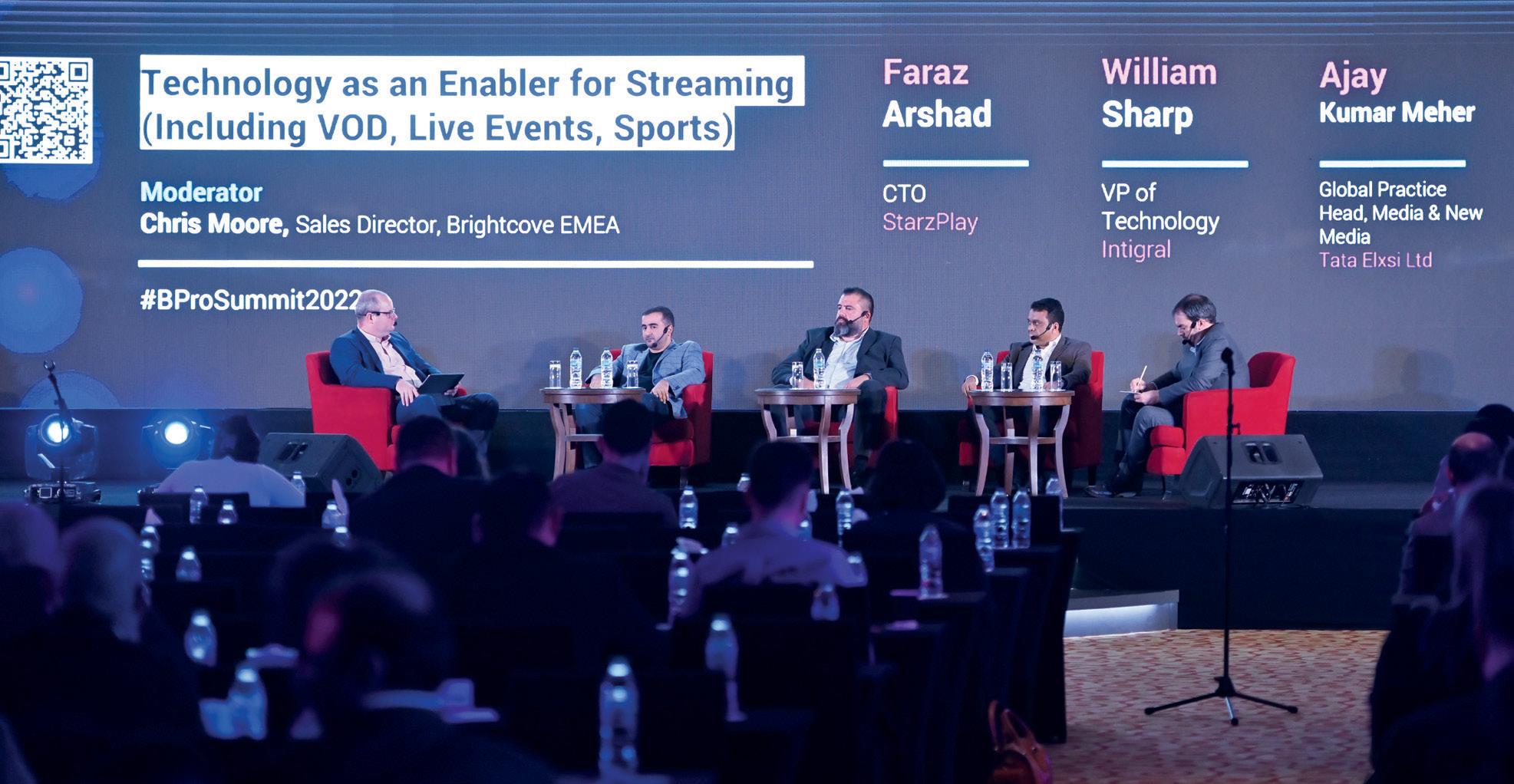
Vendors can assist content and OTT
providers in the streaming business to deliver a unified experience for subscribers, where quality is much more variable than in broadcast, stated Meher from Tata Elxsi,. “Streaming is very different across the entire ecosystem, with latency making a lot of difference to content quality,” he explained. Transcoding or last-mile delivery can have an impact on latency, and innovative technology can bridge the uniformity gap. “Technology can serve as a kind of USP for publishers and operators.”
He added that the main difference between streaming services and linear pay TV is that the former have a better understanding of their customers based on data. When you look from a consumer’s point of view, creating a good consumer experience is the most critical factor: “Building localisations, personalisation and recommendations for content into the streaming platform is key. A consumption-driven streaming platform will enjoy a strong presence in the OTT ecosystem.”
Determining whether that technology differential is
21 December 2022 | www.broadcastprome.com | PROSTREAMINGTECH
delivered
“The question for a content provider who is putting a solution on-air is which components are critical and need to be developed in-house so they fully own them, and which ones are too complex but not particularly critical and can be outsourced to a technology partner”
Damien Lucas, CPO, Ateme
by an external provider or built in-house can be a complex issue for management and is often based on several factors, said Moore. Lucas pointed out here that the question is not really whether external providers can help or not.
“The question for a content provider who is putting a solution on-air is which components are critical and need to be developed in-house so they fully own them, and which ones are too complex but not particularly critical and can be outsourced to a technology partner.”
Latency is one such factor, he elaborated. “When it comes to latency, especially in livestream, this is complex; it can be outsourced. There are many existing standards and different solutions. We, for instance, have launched a fivesecond latency with Canal Plus in Europe, which is considered the same latency as broadcast, and that’s often the target of most of our customers today. This is the competition. The other competition comes from social media. How long does it take for a tweet from someone in the stadium to reach you, versus a streaming platform? A couple of seconds to write the
tweet and another couple to reach your phone. That’s about four to five seconds. You have to be able to match that and this is best outsourced.”
Meher seconded this, adding that “innovative technologies will help streamers compete and stand out”.
Arshad, who designed the live sports delivery architecture at StarzPlay, says that for the likes of
Serie A, cricket and the World Cup, a 20-26-second latency has worked well in this region.
“As more hops add up while delivering the stream, latency starts to increase as well. So all these hops add a few seconds, and at the end the OTT service provider has to deal with customer expectations versus what’s happening in the background. With Serie A, we are the rights owner, so we could downlink the content ourselves and deliver straight. With the controlled hops in the middle, we have optimised the overall delivery workflow.”
Why product experience impacts churn
Subscriber churn has accelerated as greater competition creates abundant consumer choice. But beyond ensuring new content is available regularly, improving the product experience with better technology can reduce this attrition, Moore pointed out. “As an avid OTT user, there have been some products where the experience has tempted me to make a frisbee out of my iPad. When you have the opportunity to impress a customer, you have to do it in the first few minutes.”
Sharp agreed, citing his experience with streaming service Jawwy TV. “As a super aggregator, we need to make sure our product is spotless. If you don’t like using our product, you’re going to move off the platform.”


Retaining users requires making sure that content is well presented and searchable, and that other providers such as Netflix or Disney can be accessed from within the Jawwy ecosystem. The challenge for the company has been integrating the different variables, from the various consumer devices to the entry points and payment methods.
One way to do that is by using technology to provide new avenues for consumer engagement. Arshad offered two examples of
22 | www.broadcastprome.com | December 2022 PROSTREAMINGTECH
how
StarzPlay CTO Faraz Arshad said the decision to engage with a partner sometimes depends on time to market.
“Building localisations, personalisation and recommendations for content within the streaming platform is key. A consumption-driven streaming platform will enjoy a strong presence in the OTT ecosystem”
Ajay Kumar Meher, Global Practice Head, Media & New Media, Tata Elxsi Limited
StarzPlay does it. Initiatives such as the use of multi-cams while delivering live sports definitely improve the engagement, or as he put it: “Adding ML drives gamelike elements into an activity or task or contests right [on the screen], i.e., gamification. The more engagement you carry, the more likely you are to retain customers.”
For his part, Lucas pointed to the high volume of studies that show that the quality of the streaming experience is of great importance to the user. When the service repeatedly doesn’t perform as it should – for example, because of quality issues, content delays or rebuffering events – subscriber churn spikes. In such cases, he says, analytics platforms can help predict the likelihood of consumers unsubscribing to the service. “Big data and analytics are absolutely crucial.”
Lucas also sees value in upgrading the entire technology stack, whether content delivery or payment. He believes established players that do not consistently update their hardware risk losing out to newer providers who reap the benefits of technology becoming better and cheaper over time. “At some point of time, the cost of running an old platform becomes
non-competitive on the market [and leads to] a higher subscription price, which in turn affects churn.”
Arshad added that consistent engagement also plays a key role in reducing churn.
FAST forward – with tech support
As the streaming market matures,
new developments will impact delivery and user experience. Free ad-supported streaming television – FAST – has been called the future of streaming. Free for viewers while generating revenue by serving video ads, it has been rising in popularity. Most notable is Netflix’s new Basic with Ads service. Starzplay is also working on adding new FAST channels to its portfolio, Arshad said.
With the pivot towards monetisation comes the need to upgrade back-end technology solutions.
“Earlier, broadcasting service providers were kind of ready but [advertising] brokers would not adopt the digital ad insertion framework. Now brokers are ready, but broadcasters are catching up to the speed to be able to get this kind of digital insertion marker inputs to their customers,” Arshad said.

Lucas pointed to quality issues. For users to accept advertising, commercials on streaming channels must be of the same quality as on broadcast services.
“Too often, you come up [against] video and audio quality that is definitely not the same as the premium content that you’re trying to monetise,” he said, citing discrepancies with image resolution and audio volume as common
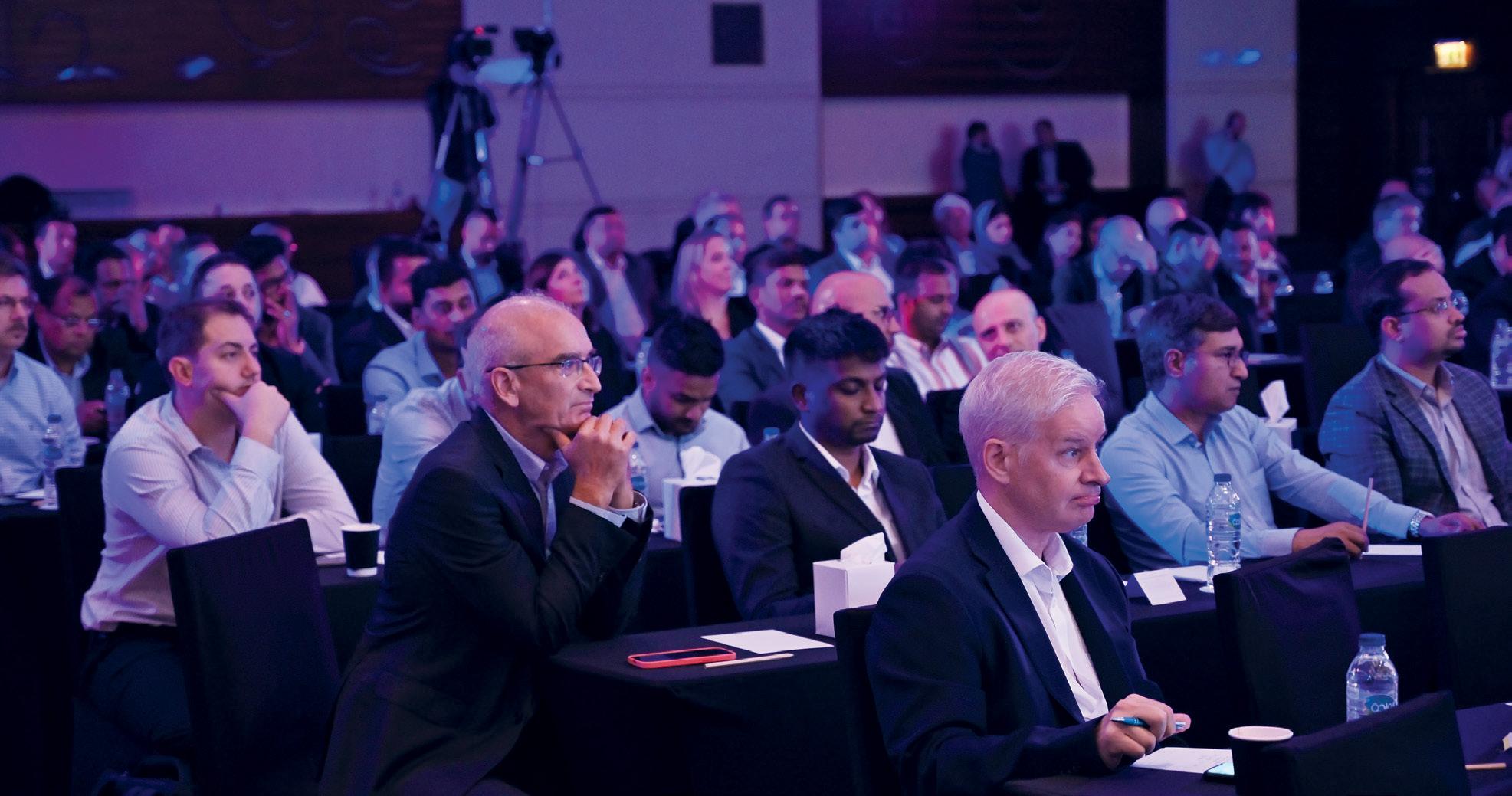
23 December 2022 | www.broadcastprome.com | PROSTREAMINGTECH
“It’s worthwhile splitting the media delivery stack and the product development stack, because they’re both very different in terms of approach”
William Sharp, VP of Technology, Intigral
problems. “For the industry, there is still a lot of work to be done to be able to provide those high-quality ads through new platforms. It’s an area where the industry and its technology partners are not yet fully up to speed compared to the requirements of the market.”
Streaming in the metaverse
As entertainment becomes increasingly interactive, personalised, immersive – and fragmented – streaming players will need to adapt or lose market share. Lucas experiences the problem at home on a daily basis.
“My kids can’t watch a two-hour movie just sitting in front of the TV. They have to chat with their friends or do something else at the same time. One screen is not enough,” he stated. “The metaverse could offer a solution to that problem, where [streaming players] not only bring the movie but also bundle other
interactions into that same experience.”
The idea of the metaverse has dominated the technology discourse over the past year, alongside nonfungible tokens, Web 3.0 and blockchain applications such as decentralised video streaming. Industry players are already working on launching Web 3.0 platforms, Meher said, while blockchain solutions are being explored with a view to reducing piracy. The metaverse brings
additional opportunities for content.
An early iteration of the trend could be in sporting events, the panellists agreed. Meher explained: “For instance, OTT players can replicate the stadium experience with immersive technology where viewers can buy tickets using cryptocurrency while simultaneously improving the quality of their video feed.”
The 2022 World Cup has already seen marketers use nonfungible tokens as key virtual elements of the metaverse, such as in the replica of Qatar’s Lusail Stadium, complete with branded villages, showrooms and shops.
“We can expect the metaverse and NFTs to have a positive impact on content creators,” Meher said. “All this emerging technology is bound to happen, and it will be having a very positive impact on the streaming industry.”
 -
-
As entertainment becomes increasingly interactive, personalised, immersive – and fragmented – streaming players will need to adapt or lose market share, the panellists agreed.

24 | www.broadcastprome.com | December 2022 PROSTREAMINGTECH
Keith J Fernandez PRO
“As more hops add up while delivering the stream, latency starts to increase as well. So all these hops add a few seconds, and at the end the OTT service provider has to deal with customer expectations versus what’s happening in the background”
Faraz Arshad, CTO, StarzPlay

TECHNOLOGIES THAT SHOULD BE ON A BROADCASTER’S ROADMAP
Industry practices and the use of technology are continuously evolving to accommodate new market needs and achieve operational efficiencies within traditional broadcast facilities, which remain the bread and butter of the vendor community. Vijaya Cherian brings you the details

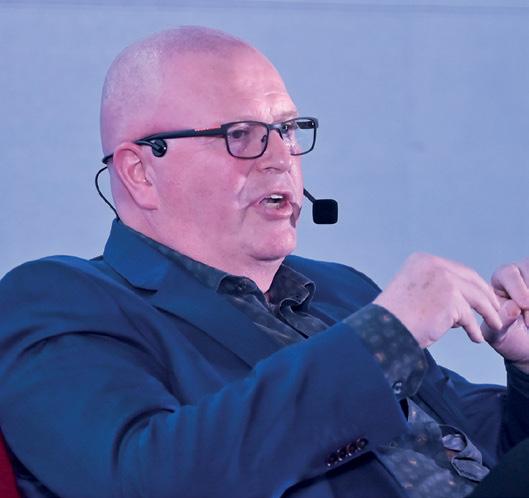
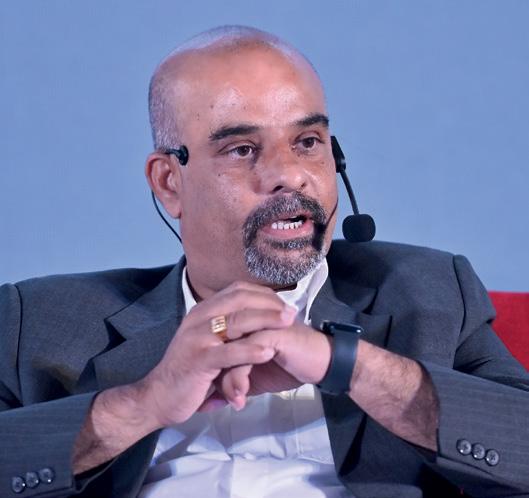

Vendors have been touting IP- and cloud-based solutions more aggressively in recent years and some standards have moved to the fore. With the industry predicting a bleak future for those who fail to migrate their systems soon, we asked a panel comprising regional end users and solution providers to lay out the status quo for our audience and share their opinions on the relevance of these technologies and upcoming trends.
Joining us for the panel were Shabbir Hussain, Director of Engineering and Operations, CNBC Arabia; Peter Van Dam, CTO of Saudi Sports Company; Srinivas Kuppa, Head of Technology, Al Mashhad; Eyad Al Dwaik, Director of Engineering, Intigral; and Guy Spivack, Regional Commercial Director MENA Comcast Technology Solutions. Hasan R. Sayed Hasan, Managing Director of Master Media, moderated the discussion.


26 | www.broadcastprome.com | December 2022 PROTECH
The panellists agreed that the requirement at a broadcasting facility must dictate the choice of solution, rather than investing in what vendors promote.
Prioritising investment
Master Media’s MD Hasan kicked off the discussion by asking the participants how they prioritised their spends in the current landscape. Hussain, whose team had just completed a major migration from SD to HD at CNBC Arabia in Dubai, stated that while 60% of the broadcaster’s investment went into traditional broadcast, 40% was allocated for digital media, which he declared to be the future.
Likewise, Kuppa, whose team is about to launch Al Mashhad out of Dubai, stated that while traditional TV remains important to the business, substantial investment has gone into digital services. He said Al Mashhad is being cautious with investments to diversify and has taken a hybrid path aimed at ensuring scaling on multiple platforms in the future.

“The good news is we have chosen a core microservices architecture which can stick and stitch to any different platform that we choose in the future. So we are building a base core which
Srinivas Kuppa, Head of Technology, Al Mashhad
can attach to any of the distribution platforms,” he commented.
Peter Van Dam is CTO of Saudi Sports Company (SSC), which has no legacy equipment but a target to acquire “international IPs and international productions and localise them with Arabic commentary”. A strong cloud advocate, he says 60% of SSC now relies on cloud services.
“The main reason for this is because we do a lot of sport that is not wellknown in the Middle East or in Saudi Arabia. The only way to find good Arabic commentators who understand the game is to source them from outside. This is particularly true of NFL, where one commentator sits in Egypt and the others in Dubai. Cloud
addresses all our requirements under such circumstances. Our plan, however, is to expand into tier-two and tier-three productions and get into a full cloud-based production environment. With cloud-based solutions, we just own a lot of computers and a lot of space in, say, AWS, have licences for microservices similar to what other parties use, but our investment in hardware is pretty minimal.”
However, Al Dwaik said Intigral has taken the on-premise route for some aspects of the business “because the investment will be way too much on the cloud for an operation of our size”.
“When it comes to media technology, once you know your requirement for the long term, cloud doesn’t make sense. So we do things mostly on-premise. Our investment is usually every year –when we do the budget, we look at the business and operational requirements, and the internal initiatives. SLAs and recurring services consume around 20-30% of our budget while the rest go
27 December 2022 | www.broadcastprome.com | PROTECH
“The good news is we have chosen a core microservices architecture which can stick and stitch to any different platform that we choose in the future”
towards on-premise expansions.
“This is because every year we have more channels, more VOD assets and more people using our services. New business needs and requirements, new features and internal initiatives consume around 10% of our budget.”
At Comcast, a major global solution provider, Spivack said spend varies from region to region. “We tend to work on the principle that there are six key factors that drive a successful transformation. From that, the customer can then work out where it is that they need to bring something in-house or outsource it.”
Prioritising budgets depends on several factors: “We’re now seeing the emergence of free ad-supported streaming television (FAST) channels and observing how those will mix in with the standard SVOD, TVOD, etc. Also, how do you adapt to an ecosystem that is constantly evolving? There’re always going to be new players coming in. How are you set up to scale towards how they integrate, for example? In certain parts of the world, they still want to keep technology on premise from a control and a data standpoint. I think that will change slowly. What we do know is that by moving to the cloud, you are
moving into internet speed. You can start things up and bring them down at your own pace. And I think that’s where I’m beginning to see more of the change happening, particularly in this region.”
Use cloud-based solutions judiciously Cloud solutions have been around for a long time, but several MENA players have so far been reluctant to make that investment, for varying reasons. Al Dwaik, who is responsible for the media infrastructure at Intigral and previously spoke in favour of on-premise solutions, clarified the company’s stance.
“We have a DevOps team and everything there is in the cloud. For the media part, though, we have around 200 channels and we’re going to be running these for the next few years. When we looked at how much it would cost us to run it on the cloud, it was way more compared to our investments on-premise. But when you’re talking about event-based channels like the World Cup, where you need some capacity for just a month, we can’t justify an on-premise investment. In that scenario, the cloud is better.”
Most regional media houses have taken a hybrid path. Kuppa says the Al Mashhad team “decided that anything that is contribution- and distributionrelated will be distributed and diversified through the cloud, but anything that is studio production-
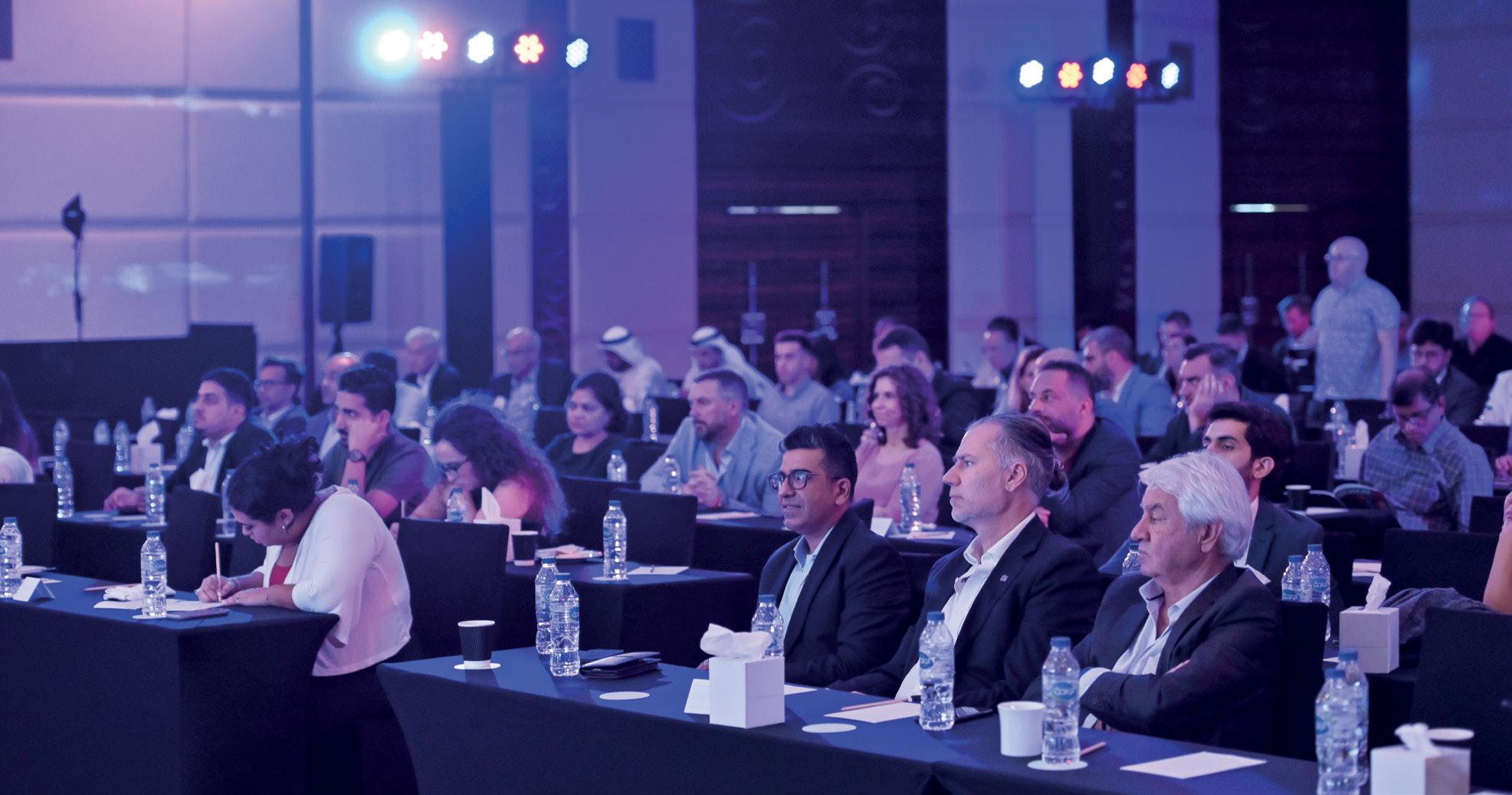
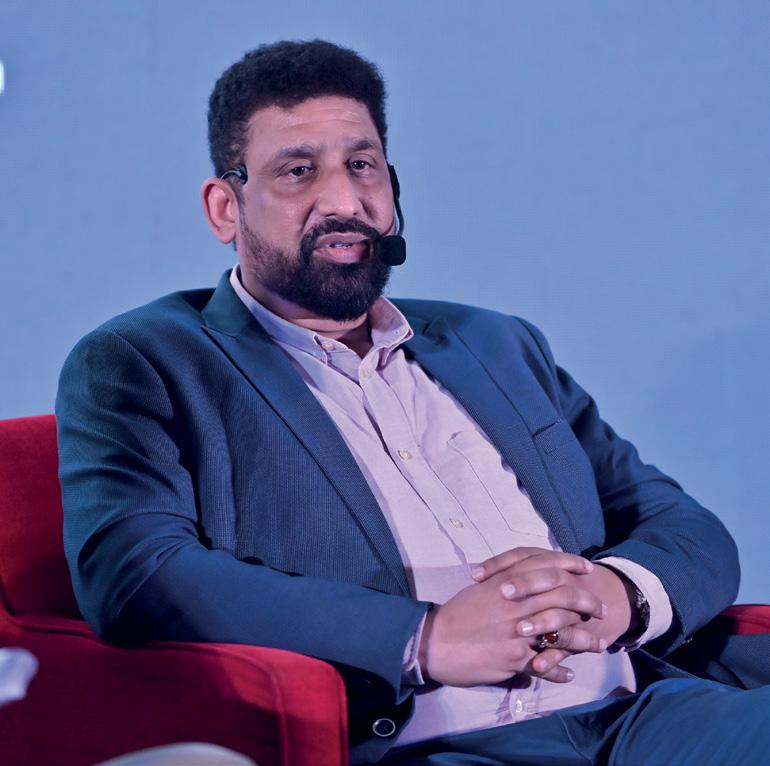
28 | www.broadcastprome.com | December 2022 PROTECH
“IP gives you a lot of flexibility. Most of the solutions in the market now have reached a fair level of maturity, and that gives us the confidence to go with IP”
Shabbir Hussain, Director of Engineering and Operations, CNBC Arabia
related is best kept on-premise due to quality and zero latency”. CNBC Arabia, with eight bureaus across the Arab world, has taken a similar approach, keeping some parts of production and post-production in the cloud.

Van Dam pointed out that “every organisation needs to look at what their needs are and how fast they need to react and what is the legacy they pull with them” to make their cloud decisions. “In our case, as a young group, we are growing very fast. We have to adapt constantly and scalability is crucial for us. Some parts we keep on-premise because they are too expensive or are just not feasible to do in the cloud.”
He also clarified the difference between cloud production and remote production, with each calling for a different tech combination. “We have remote cloud productions, but we also have remote productions that go over an MPLS network. These are two completely different types of productions. It’s also a budgetbased decision. If I need to do a tier-three basketball game and I need to put an OB there, it costs too much. So I’d much rather go with a multiple camera set-up in a cloud environment where the director sits in one country, the producer in, say, Lebanon, the graphics expert in maybe Riyadh, and the broadcaster then takes it on air.”
Van Dam also elaborates on what can be achieved if telcos in a country up their game.
“In Saudi Arabia, we have 29 venues connected throughout the Kingdom and each has an MPLS L2/L3 network layer. And it’s a 10Gbps main redundant and upgradable to 40Gbps with the push of a button. So we can do our remote productions in HD and UHD over an MPLS network and they are very secure. It is highly reliable, the quality is higher and the cost
Guy Spivack, Regional Commercial Director MENA, Comcast Technology Solutions
will go down over time. And this is the future – an MPLS-type remote production and the cloud-type remote production. And then you need to get something in between, a platform that both of them can talk to and that you can use to contribute and distribute.”
IP offers flexibility but SMPTE 2110 is not necessarily the best Everyone’s take on IP installation was slightly different. With CNBC Arabia ready to launch a brand-
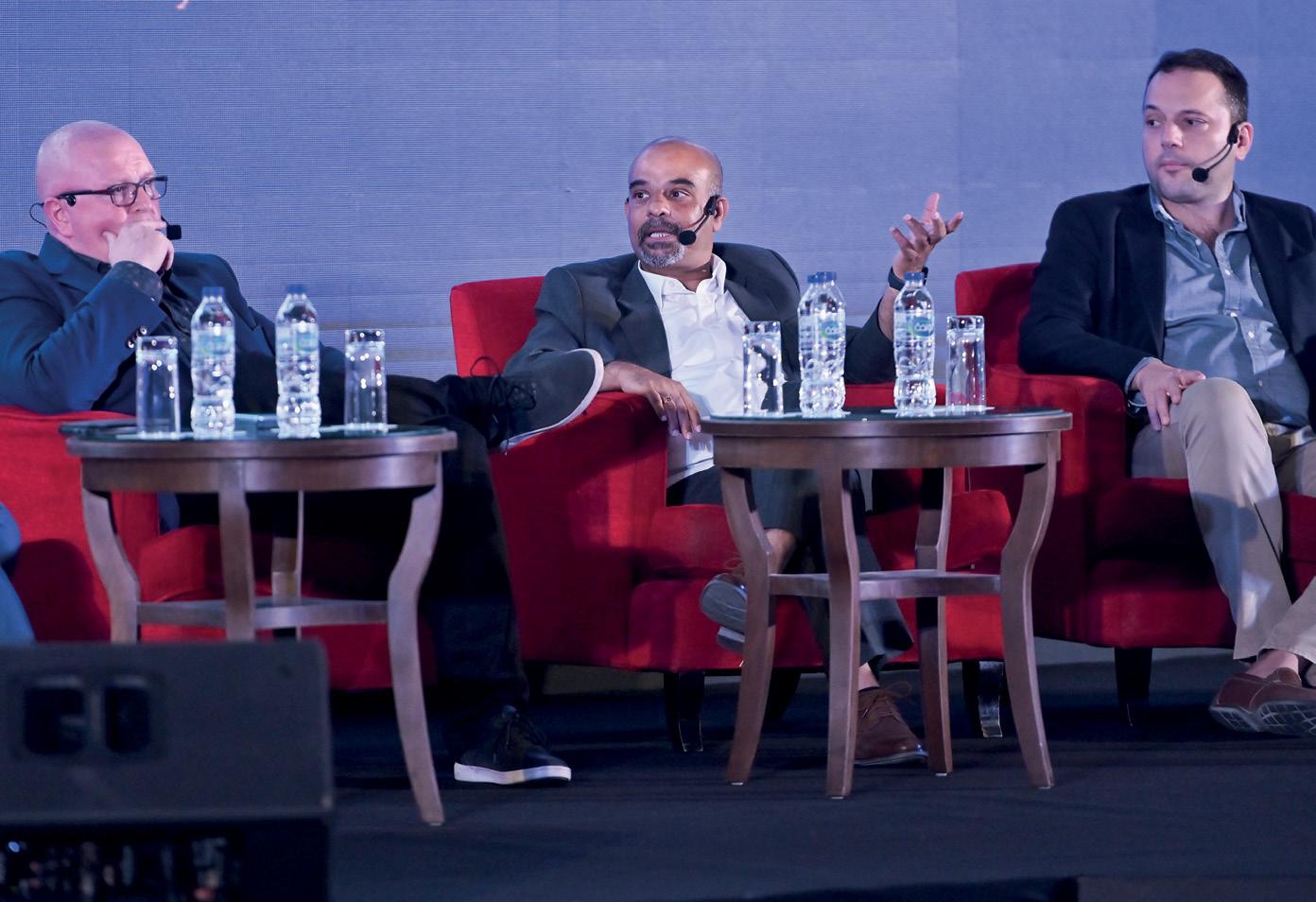
new IP facility in Doha, Hussain said that “going forward, the broadcaster would now consider IP for any new facility” it builds from the ground up.
“IP gives you a lot of flexibility. Most of the solutions in the market now have reached a fair level of maturity, and that gives us the confidence to go with IP. Manufacturers and systems integrators have had the opportunity through working on several installations to fix snags, and they are better placed to resolve issues. Operationally, there’s not much to show because it is all on the back end. But when you decide to upgrade your facilities, IP will deliver,” he commented.
Kuppa favoured a hybrid approach: “IP is two to three times more expensive than the hybrid approach that we have taken. IP is fantastic, but difficult to justify to stakeholders because they want to see a tangible difference in operations.”
For those with a greenfield opportunity, Van Dam said IP was a good place to start but cautioned that the SMPTE 2110 standard
29 December 2022 | www.broadcastprome.com | PROTECH
“How do you adapt to an ecosystem that is constantly evolving? There’re always going to be new players coming in. How are you set up to scale towards how they integrate, for example?”
leaves much to be desired and is nowhere near as robust as SDI. “IP infrastructure will give us more flexibility. The initial cost may be higher, but it will allow us to build and add the building blocks slowly – unlike SDI, where modular additions were not possible.”
Al Dwaik added that IP investments should be based on need. “Unless IP is solving an issue for you and unless you’re talking about a bigger installation on a greenfield site, I would recommend sticking with SDI for the smaller stuff.”
Most panellists agreed that SMPTE 2110 was not a great standard. Some felt that alternatives like NDI, SRT and RTMP should be explored further.
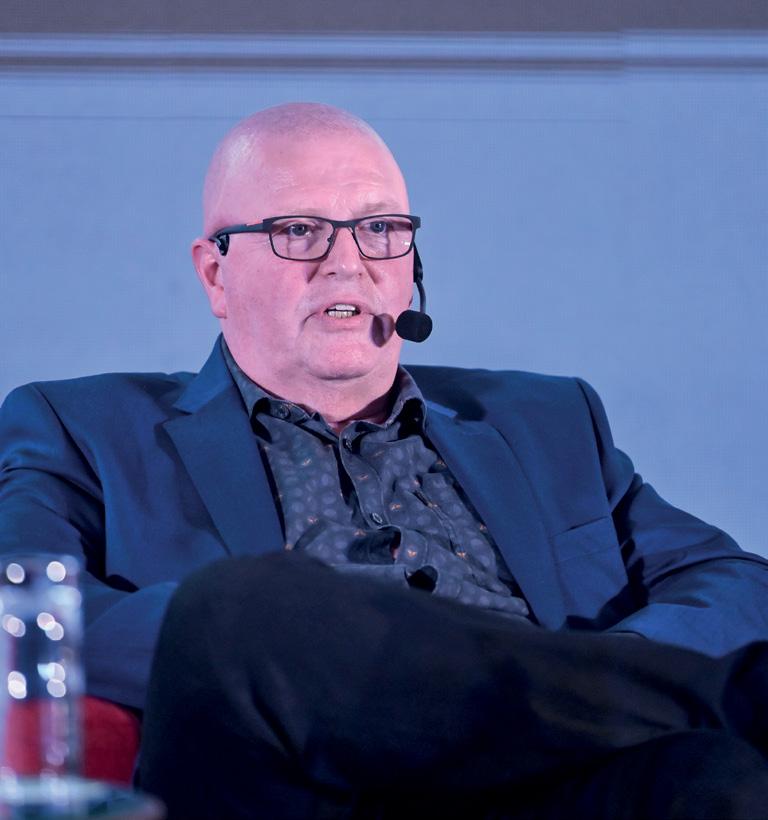
“The standards are there, but none of the standards are very detailed,” argued Van Dam. “And that’s the advantage of being in the cloud. We adapt to what they give us … the engineers will go back and forth a bit before they arrive at the right setting. But you find a way, and then cloud is more flexible because you can test more and have more flexibility.” He recommended
going with the standards that work best for each facility.
Hussain argued that for bigger installations with 50-plus vendors, it is safer to go with SMPTE 2110 because it is a collaborative project with the vendor community and therefore has more support.

The move to FAST
The discussion then moved to FAST. Spivack explained
Comcast’s role in supporting the broadcast community.
“We provide a video management tool that’s essentially a bit like the gearbox of a car, and that effectively then controls everything else. So we work with different players that can bring together that all-encompassing FAST channel solution, but we don’t actually bring channels into the market; we have all the enablers to make that possible.”
Al Dwaik said: “The best use of FAST channels is when you have niche subjects or very popular subjects. You contact content creators, you bring them on the platform where you create FAST channels that address those niche subjects or popular subjects. These content creators have their own channel on other platforms. They can promote your FAST channels platform. They can bring new customers for a subscription fee, have early access to some exclusive content. This is a tried and tested model. This is a very good business model, but it’s not your standard entertainment business model.”
Spivack argued: “There’s never going to be a set standard when it comes to FAST. I think it’s all going to be derived from the data that’s generated within your overall system. So you’ll know at what point to be able to launch a FAST channel if you want, and what that content should be and who that audience is, and how you’re going to mix that up with maybe more subscription-based services, and how you integrate all of it. I don’t believe there will be just that one way of approaching FAST channels, and I think for each region, it will be different.”
What’s next?
With each panellist prepping his facilities for the future, moderator Hasan asked what was on their list of top trending technologies.
30 | www.broadcastprome.com | December 2022 PROTECH
“As a young group, we are growing very fast. We have to adapt constantly and scalability is crucial for us. Some parts we keep onpremise because they are too expensive or are just not feasible to do in the cloud”
Peter Van Dam, CTO, Saudi Sports Company
Every list included 4K, AI, ML, data analytics and XR.
Kuppa said software-defined architecture, AR/VR and 4K with hybrid IP was big for Al Mashhad.

Van Dam remarked that data is crucial in sports, with XR also top of his list: “Data and XR are important to us. We are starting to use more AI-type of cameras to get all this data out and to convert it into any possible form that can use graphics. Augmented reality is the next part, where you get these floating graphics. The second part in AI is we are going to start using it for second- and third-tier productions because it can be a strong add-on on top of an X amount of real cameras. In addition, we are focusing on XR. This offers more flexibility, more dynamics and more depth.”
Hussain agreed; CNBC Arabia has already made major inroads into VR with its news programmes, and its next step is XR. “Currently we are doing some VR programmes, but we see greater opportunity with XR and it won’t be long before we begin this.”
Al Dwaik pointed out that “video encoding can be drastically improved using AI” and that he saw AV1 becoming a popular standard. “Right now, Nvidia GPUs are doing something different. With AI, they have stopped coding the pictures in a standard way; they recognise the face and then reconstruct the whole video at the other end. That gives you amazing data savings running at around 0.2Mbps.
“Now there are some companies that are working with AI to enhance video encoding, where you can have the most optimal video encoding for a specific codec. I believe that’s a good place for AI. Also, once you have a
complex system with logs coming from different sub-systems, AI can be the best tool to correlate events and finding anomalies.
“I also see AV1 becoming a more popular video encoding standard. With new GPUs and CPUs emerging with hardware support for AV1, I think in two to three years we are likely to see more widespread adoption.”
Spivack commented that AI will hugely improve operational efficiency. He also saw great potential to build in contextual advertising, which he said is going to be a massive driver for monetisation.
“I think you now have much more control over how you want to build your OTT platforms and how those configure to your existing workflows within your organisation. A systems integrator is never really going to know that, but if you can pick the pieces and put them together in the way that makes the most sense for you, that’s what I think is now happening here. I believe that our approach is being welcomed.”
31 December 2022 | www.broadcastprome.com | PROTECH
PRO
“When you’re talking about event-based channels like the World Cup, where you need some capacity for just a month, we can’t justify an on-premise investment. In that scenario, the cloud is better”
Eyad Al Dwaik, Director of Engineering, Intigral


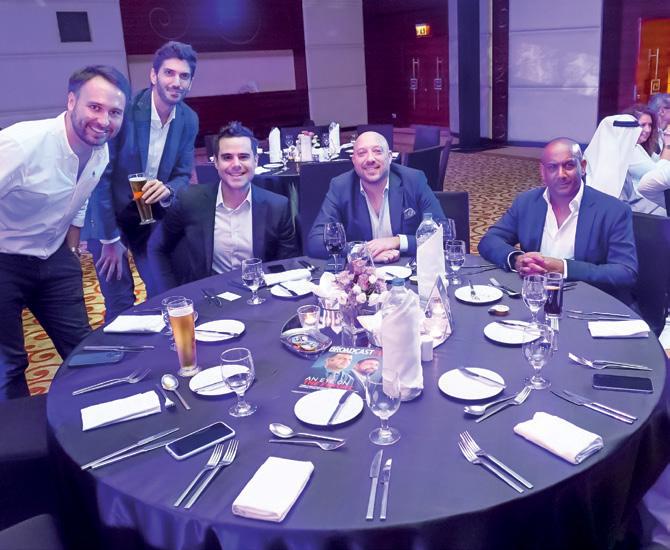


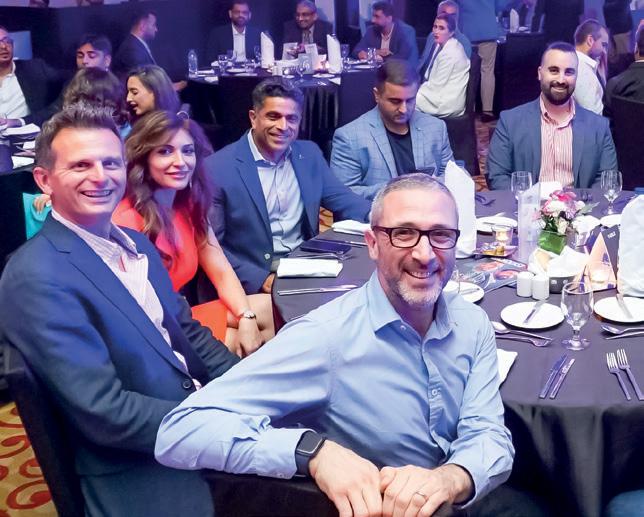
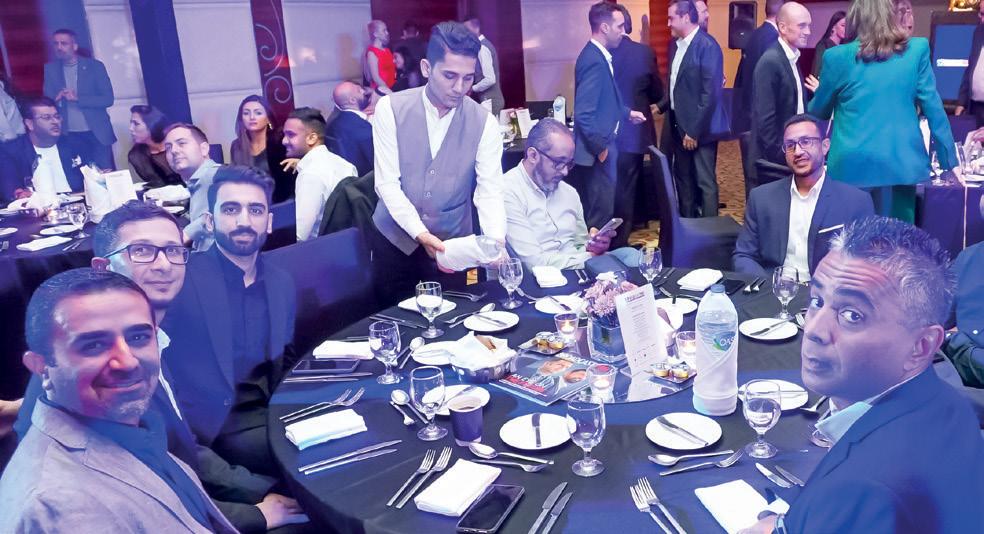

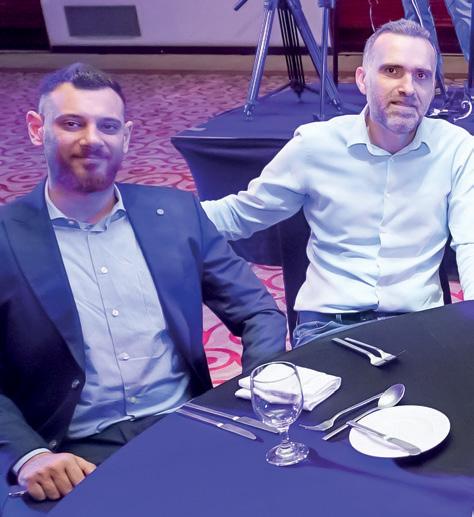
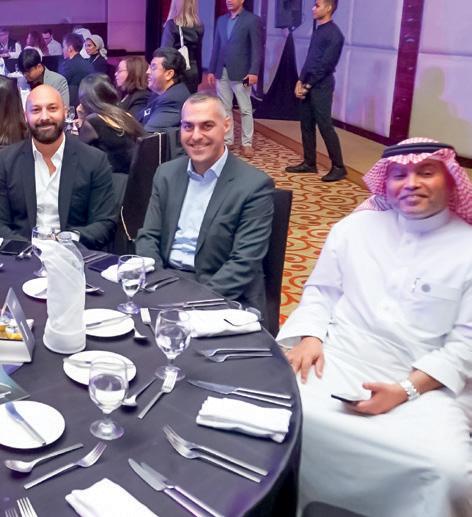
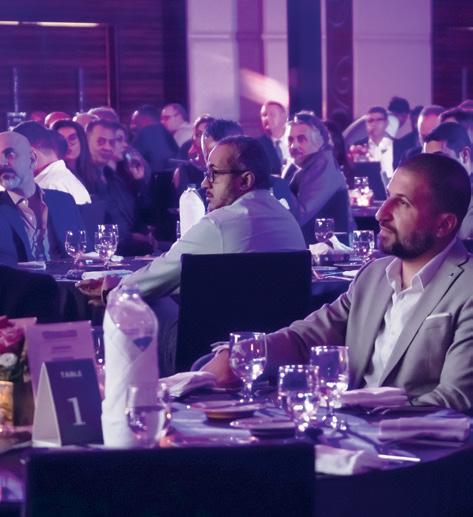


32 | www.broadcastprome.com | December 2022 PROAWARDS
The 12th edition of the BroadcastPro ME Summit & Awards concluded with 22 of the industry’s leading game-changers being honoured at a glittering awards gala. Celebrating those whose hard work and creativity help make the industry better than ever before, the awards are well-known for covering a broad range of categories, rewarding excellence in various fields across the broadcast workflow, from production and post-production to traditional broadcast and new media platforms.
The awards – attended by more than 230 of the sector’s leading decision-makers and industry moguls – followed a day dedicated to premium networking and intel gathering at the BroadcastPro ME Summit. Long regarded as the region’s stand-out event, it returned this year to its full pre-Covid dimensions, bringing around 250 people together during the day to hear provocative panel sessions with ’touchstone’ leaders in the broadcast space.
Majed Al Suwaidi, Managing Director of Dubai Media City, Dubai Studio City and Dubai Production City, who graced the occasion as chief guest, addressed the gathering, Vijaya Cherian, Editor of BroadcastPro &
SatellitePro ME, and Managing Partner at CPI Trade Media, presented Al Suwaidi with a special memento at the awards gala, to honour him for his outstanding leadership in building the UAE media ecosystem. While one award was reserved for the satellite segment, 21 awards were given away in the broadcast segment. Commenting on the Awards, Vijaya Cherian commented: “The BroadcastPro ME Awards have gathered momentum every year, and a key feature here is not just the sheer volume of entries, but their steadily increasing quality. The awards are now seen by practitioners across the region to occupy a critical role in highlighting who is doing what and who’s doing it best. I am delighted with what we have achieved and at this year’s ceremony, we have seen some important new faces joining the ranks of the disruptors and innovators.”
A big thank you to our judges this year: Andrew Clemson, DoP; Fadi Ismail, founder and GM, DKL Group; Hasan Aslan, cinematographer and DoP; Hasan Sayed Hasan, MD of Master Media; Miljenko Logozar, co-founder and CEO of StoryDeck.io; Sanjay Raina, Global Media and Entertainment Executive; and Vijaya Cherian.
33 December 2022 | www.broadcastprome.com | PROAWARDS
HONOURING THE 2022 BROADCAST
STRATEGIC PARTNER KNOWLEDGE PARTNER ASSOCIATE SPONSOR ASSOCIATE SPONSOR SILVER SPONSOR SILVER SPONSOR NETWORKING SPONSOR ASSOCIATE SPONSOR ASSOCIATE SPONSOR ASSOCIATE SPONSOR NETWORKING SPONSOR NETWORKING SPONSOR NETWORKING SPONSOR ORGANISED BY NETWORKING SPONSOR
Innovators and market-makers were acclaimed at the BroadcastPro ME Summit & Awards 2022 on November 8 at the Westin Mina Seyahi, Dubai.
TITANS
Broadcast Awards

BEST CONTENT STRATEGY OF THE YEAR

Captain Boy
Captain Boy ventured into creating and producing a scripted series on social media with 160 episodes between Facebook, YouTube, TikTok and Instagram that together achieved 15 million minutes of views, enjoyed incredible organic growth and had 30% profit in its first year (2022). The Quack Family Dailies social media series helped the company work with its clients to create brand awareness, loyalty and activation through smart brand integration in the storyline and it ticked all the right boxes and some more. Walid Mahmoud Khalaf (l), co-founder, partner and owner of Captain Boy, received the award from Nesma Khalifa, Business Development Manager at SAWA Entertainment.
BEST KIDS’ INITIATIVE OF THE YEAR
Nana Zanana – A Follk Creative Solutions & Cartoon Network MENAT collaboration
Nana Zanana, written and directed by Islam Ahmed, cofounder and CCO of Follk Creative Solutions (extreme left), is an episodic show that features a young fly who considers herself a queen, and annoys everyone although she tries very hard to live at peace with all. With one of the first female characters to join Cartoon Network’s vast portfolio of male-dominated protagonists, Nana Zanana captivated the hearts of children across the region and of our judges. Pictured here are the teams from Follk Creative Solutions and Cartoon Network MENAT.
BEST OTT PRODUCTION OF THE YEAR

The Killing - Shahid
MBC Group streaming platform Shahid’s entries into this category were exceptional, all heavyweights in their own right and equally deserving of an award. The Killing, however, was the jury’s choice and it stood out on several counts. This Arabic adaptation of the Nordic Noir genre is a brave attempt at a crime series with believable plot twists, season-long storylines and dark overtones. Besides having a great script, this police procedural drama pushes the boundaries in terms of genre, innovative storytelling, great direction and high production values. Pictured with the award is the Shahid team.
34 | www.broadcastprome.com | December 2022 PROAWARDS
Broadcast Awards
BEST TV PRODUCTION OF THE YEAR - UNSCRIPTED Astronauts –Different ProductionsA Rise Studios Company
Pulling off a show like Astronauts, which is both imaginative and out- of-the-box for the MENA region, is no mean feat. It is well done, it is pan arab and it is full of adventures and challenges. Kudos to Mazen Laham, MD and founder of Different Productions, who is also the force behind Dubai Bling, which was trending at #3 globally on Netflix at the time of the awards. A number of the shortlisted entries at the awards were produced from the Different Productions stable. Mazen Laham (l) received the award from Klaus Jasper, Senior Sales Director Middle East and CIS at Lawo.

BEST TV PRODUCTION OF THE YEAR - SCRIPTED
Breaking Bones - Clacket Media
A powerful tale that is both well executed and of high production value, Breaking Bones from Clacket Media, ranked first in terms of viewership in the UAE and reportedly in several European countries, including France, Finland and the UK, left a big impact on the judges. With the perfect mix of a good storyline, a fantastic cast, and additional behind-the-scenes clips and key scenes, this entry topped the list for the Best TV Production of the Year in the scripted category. Pictured with the award from left are Huda Saad, Executive Director, and Eyad Al Najjar, owner of Clacket Media, with Nabil Abou Samra, Head of Arabic Production at the Abu Dhabi Film Commission.
BEST RADIO INITIATIVE OF THE YEAR
360 Radio
This young startup in Dubai, focused on education and entertainment, is keen to empower students by giving them a platform to showcase their talents and address concerns raised by them. As its audience is primarily the youth, 360 Radio has also ensured its app is available for download on both i0S and Google Play as well as several other platforms including Apple TV, Apple Watch, Android TV, Car Play and Alexa. For its attempt to make a difference and ensure availability across all digital platforms, 360 Radio emerged the winner in this category. Peter Mrkic (r), Vice President, Corporate Strategy and Governance at Intigral, presented the award to Binju Kochunny, Programme Director at 360 Radio.


35 December 2022 | www.broadcastprome.com | PROAWARDS
Broadcast Awards
BEST STUDIO OF THE YEAR
Firdaus
Studio by AR Rahman
Firdaus Studio by AR Rahman, a brand-new recording and scoring facility in Dubai, is equipped with best-in-class audio equipment and some of the world’s finest microphones to accommodate varied recording requirements, from vocal dubbing sessions to entire orchestral recordings. Its control room combines the very best analogue sound with the ease of digital. This is Dubai’s first and only Certified Dolby Atmos HE studio and is fully integrated with AV over networks, making it an extremely flexible workspace. Pictured are teams from owner Expo City Dubai and studio designer Modi Digital, who received the award from Ryan Burr (extreme right), Head of Technical Sales & Application Engineering at Neumann/Sennheiser.
BEST SPORTS STRATEGY OF THE YEAR
StarzPlay
Where other players have had solid capital to invest in broadcast sports rights for the MENA region, StarzPlay has relied almost entirely on innovative strategies to crack deal after deal and is bringing some of the most iconic sporting events across various genres to its platform. Until it did this, all sports rights were the monopoly of one broadcast entity. Its smart business acumen, collaborative strategies and disruptive thinking to bring sports assets to the region, as well as the technical prowess to ensure a seamless viewing experience of those assets whether live or on-demand, make it truly awardwinning. The StarzPlay team received the award from Samir Isbaih (extreme right), VP Sales & APAC, Pebble.
BROADCASTPRO ME INNOVATIVE PROJECT OF THE YEAR



Alaraby TV Network
Alaraby TV won on several counts for this project. Besides pulling off a full migration from its London facility to its brand-new HQ on home ground in Doha within a record eight months, the team built a full-IP facility based on the SMPTE 2110 standard. The TV network has built some ace studios, with one atop a swimming pool, which boast new technologies aimed at offering the best experience to viewers. Kudos to Alaraby’s tech chief Ali Husseini, who brought together industry-leading vendors to collaborate on this project and create a truly remarkable IP facility. Pictured is Ali Husseini with the award.
36 | www.broadcastprome.com | December 2022 PROAWARDS
Broadcast Awards
MENA TRENDSETTER OF THE YEAR Action Filmz Productions LLC
Equipment is usually brought into the UAE for shoots. This time, tonnes of equipment were shipped from the UAE for a 30-week shoot in Tunisia for a highprofile MBC production that runs from July 2022 to January 2023. Dubai-based rental house Action Filmz Productions LLC did the UAE proud by providing this service -- one that hasn’t been attempted before in this region. By carrying out this project successfully, Action Filmz has now given the UAE and its solution providers the confidence that we are fully capable of handling such projects should they come our way. The team from Action FIlmz Productions LLC received the award from Hasan Sayed Hasan (r), MD of Master Media.
Shahid has developed a machine learning clustering model in-house that groups users based on their viewing behaviour, which is calculated using “value play” logic. The model was developed through productionised code that lives in the client’s ecosystem and is fine-tuned according to each region to obtain the optimal number of clusters. Every user is assigned a cluster to understand their preferences and customise the offering. From left: Phillip Badenhorst, Head of Data and Strategic Planning and Jediael Krishnasamy, Data Science Manager received the award from Sri Hari, SVP Sales, and Business Head EMEA, Amagi.
SYSTEMS INTEGRATOR OF THE YEAR Salam Media Cast / MGI


The MGI team won this award for their work at CNBC Arabia Dubai, where they undertook what appears to be a fairly straightforward migration from standard definition (SD) to high definition (HD). The MGI team, however, had much to contend with as the HQ is a fairly old facility with legacy equipment that was integrated two decades ago. The project, which was initially planned prior to Covid, resumed earlier this year but meticulous planning and collaboration was required to ensure that there were no blackouts, that systems arrived on time from suppliers and the integration was carried out within the tight deadline. The MGI team received the award from Ajay Kumar Meher (r), Global Practice Head, Media & New Media, Tata Elxsi Limited.
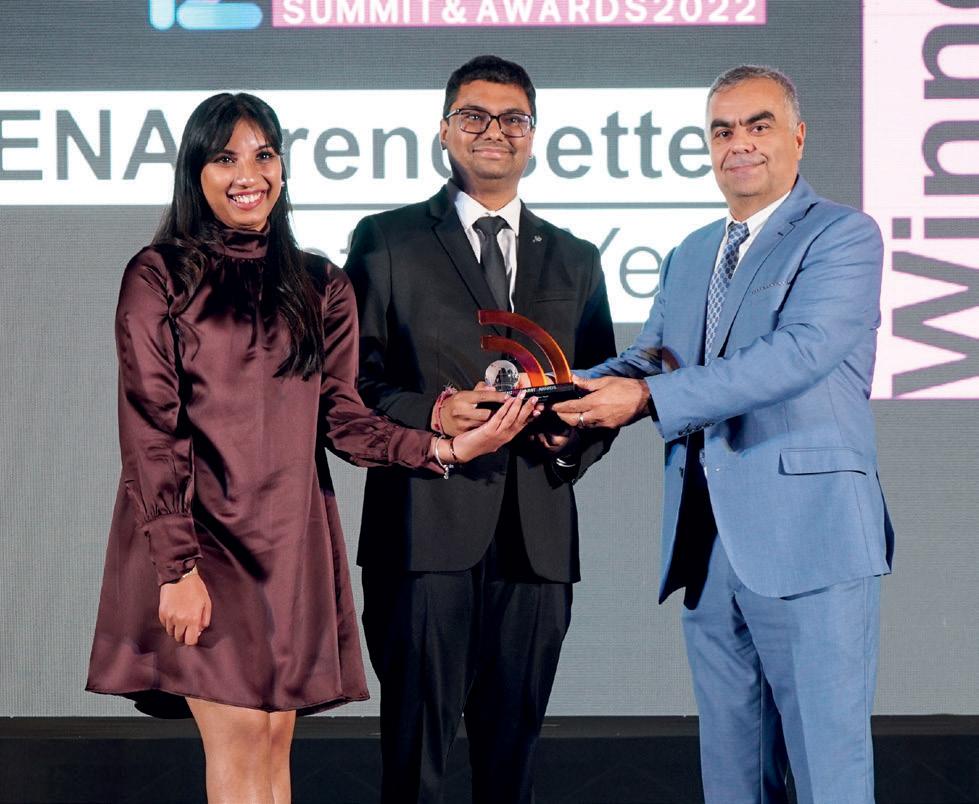
37 December 2022 | www.broadcastprome.com | PROAWARDS
TECH
IN OTT Shahid Content Preference Audience Clusters
BEST 2022
IMPLEMENTATION
Broadcast Awards
STREAMING SERVICE OF THE YEAR
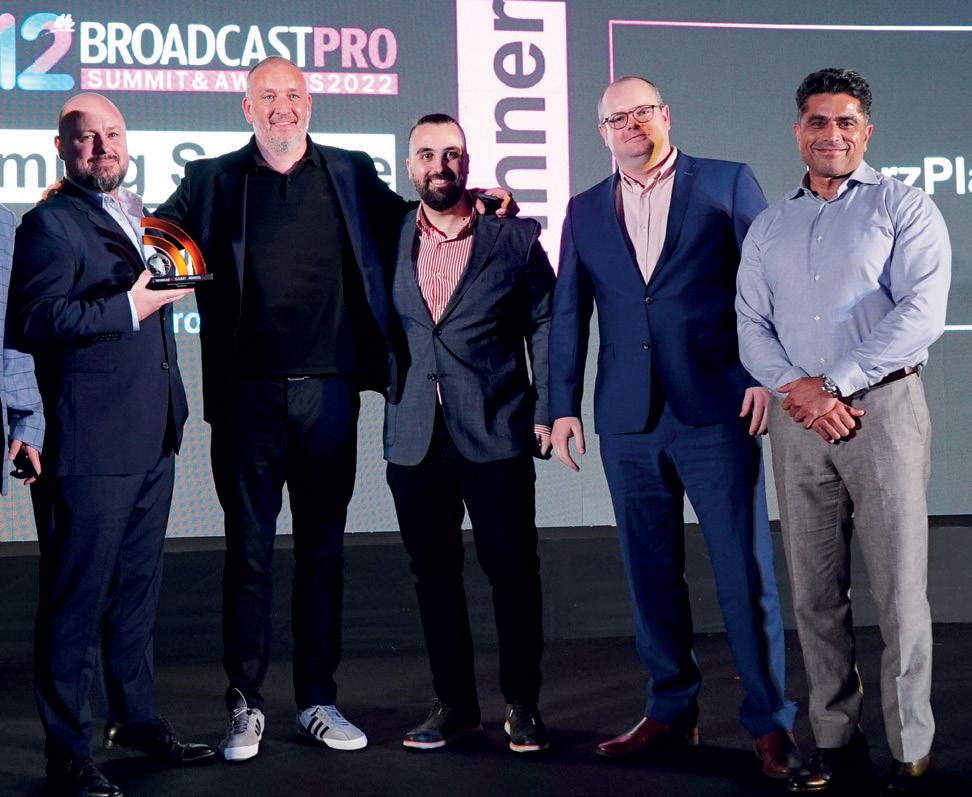
StarzPlay
StarzPlay deserved this award on several counts. For one, the streamer disrupted the market by making courageous inroads into the sports space, where other more powerful broadcasters had failed to make a breakthrough. Secondly, it has leveraged lucrative partnerships and complemented this with innovative technology. It went all out to launch new payment models and partner with local telcos, retailers and solution providers while broadening its original content portfolio and bolstering its Arabic programming. The StarzPlay story is one that combines a unique mix of hard work, creative and technical strategy, and business acumen. Pictured with the award is the StarzPlay team.
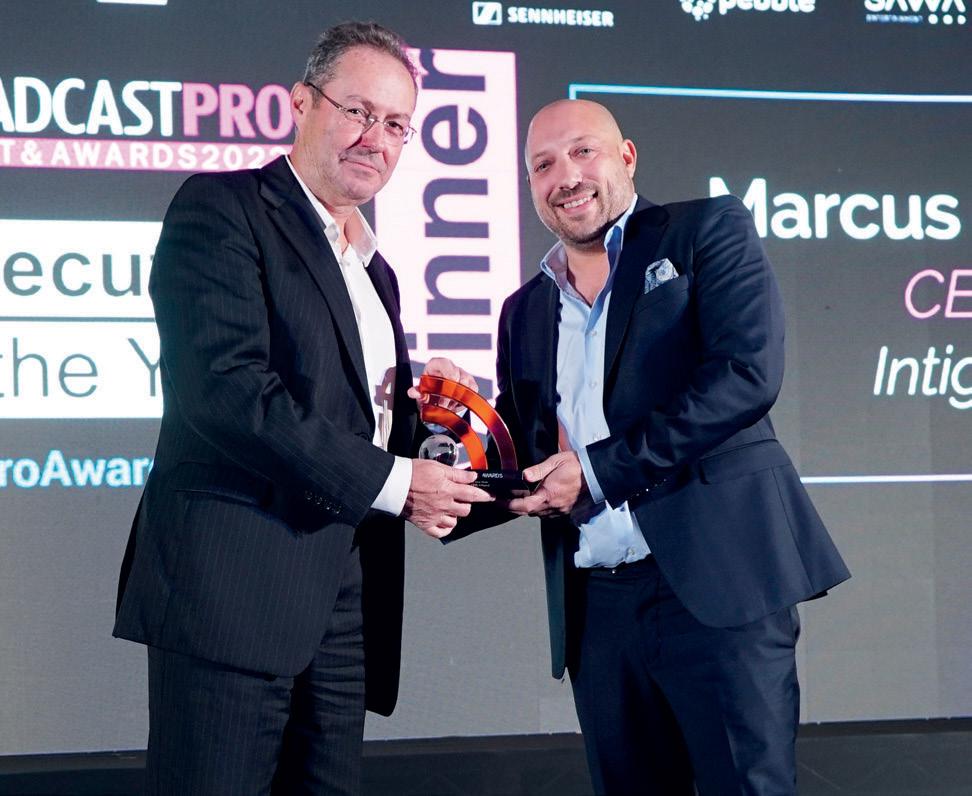
CTO OF THE YEAR
Faraz Arshad, CTO, StarzPlay
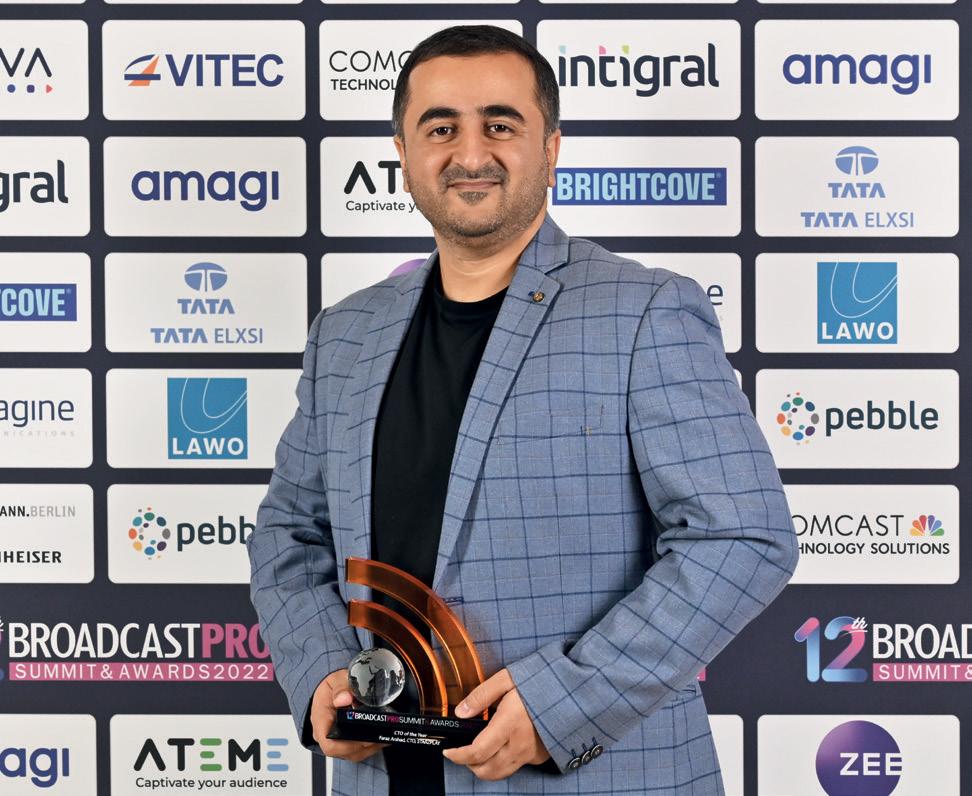
Faraz Arshad, who has more than 15 years of experience in innovative platform engineering and technical leadership, has led the technical transformation and business acceleration results at StarzPlay. He has helped shape its technology strategy, budgeting and development by leveraging the next generation of digitisation technologies. He oversees Platform Engineering (Hybrid Cloud Architectures, Micro Services Development, Event Driven Architectures, Big Data, Cyber Security, Video Streaming & CDNs) at StarzPlay in close collaboration with internal business, product and technology teams, as well as third-party integrators. Pictured here with the award is Faraz Arshad.
OTT EXECUTIVE OF THE YEAR
Markus Golder – CEO, Intigral
Markus Golder, who oversees the overall strategy, operations and performance at Intigral, has successfully guided the rapid expansion of Intigral’s premium OTT service Jawwy TV across eight major markets in the region. His passion, innovative approach and committed leadership style have propelled Jawwy TV’s evolution as an emerging OTT player driven by its super aggregator strategy of forming partnerships with the likes of MBC, OSN, Fox, StarzPlay, Wide Khaliji, Shahid VIP and Discovery. Markus Golder (l) received the award from Guy Spivack, Regional Commercial Director MENA at Comcast Technology Solutions.
38 | www.broadcastprome.com | December 2022 PROAWARDS
Broadcast Awards
BROADCAST EXECUTIVE OF THE YEAR
Adil Memon, Executive VPContent & Marketing at Zee Entertainment Enterprises Ltd
Adil Memon has helped take Zee Entertainment’s Arabiclanguage co-productions to new heights, first by leading the drama vertical in 2017 and more recently by venturing into Arabic-language movies. His co-production division is currently working on five new drama projects and a movie line-up. He intends to launch Zee’s first Ramadan drama series and first Arabic web series in 2023. Memon is a veteran player in broadcast and has led Zee through many successes in this region. He received the award from Anas Hantash (r), Sales Director, MENA & South Asia, Imagine Communications.
EXCELLENCE IN VISUAL STORYTELLING Al Arabiya News Channel


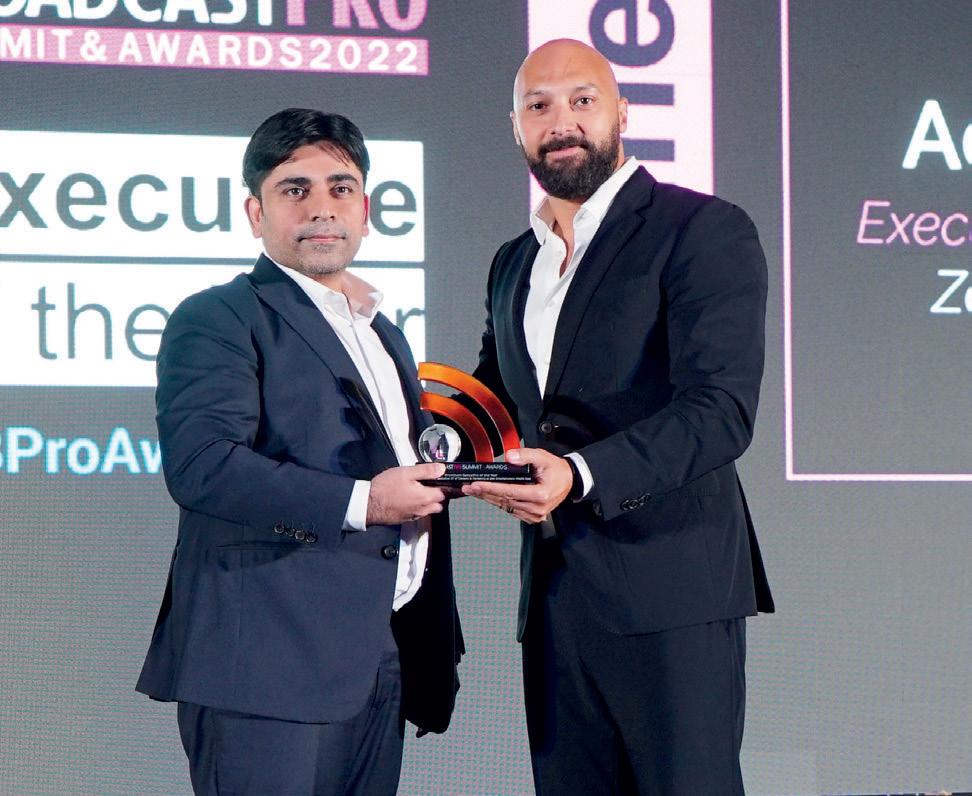
The Hour 60 programme on Al Arabiya is truly award-winning in its impressive use of extended reality (XR) clips to present its news stories. The news broadcaster has explored the potential of multiple technologies to make its stories more visual. Its programmes have been brought to life through Al Arabiya’s studio, where every surface has been designed to potentially be used in the show. The studio includes several large video walls, unique talent positions to add AR elements to broadcasts, and a large virtual window that allows extensions from the studio into the virtual space. Pictured with the award is the Al Arabiya team.
ZEE5 Global’s news drama The Broken News, which showcases the story of idealistic journalism versus eyeball journalism, won the Editor’s Choice award for its gripping narrative and high production value. The series is reported to have accounted for 21% of viewership of ZEE5 Global in the month of its launch. Although this entry did not qualify for our regional awards, which are focused on Arabic productions or those filmed in MENA, we considered this entry an exception given the company has operations in the Middle East and is an active player in the region. Finniey Benjamin, Associate Director Marketing at ZEE5 Global, received the award from Heba Korayem (r), Content Market Consultant at H.Consult.
39 December 2022 | www.broadcastprome.com | PROAWARDS
BEST FOREIGN-LANGUAGE OTT PRODUCTION The Broken News – ZEE5 Global
Broadcast Awards

OUTSTANDING INTEGRATION IN RADIO
RCS
RCS recently delivered a turnkey solution for Bahrain’s Ministry of Information Affairs, where it designed and built six FM stations and eighteen studios for the government entity. Although the project faced several hurdles in terms of chip shortages, price hikes in hardware and production delays, RCS worked in tandem with all the suppliers to deliver the project on time. The service provider was chosen from among 12 competing companies to deliver this project. RCS used standard broadcast technologies for this project to ensure the stability of the deployment. Baher Al Zaher (l), MD of RCS MENA, received the award from Sandip Virk, Group Sales Director, CPI Trade Media.
EXCELLENCE IN ARABIC-LANGUAGE PRODUCTIONS
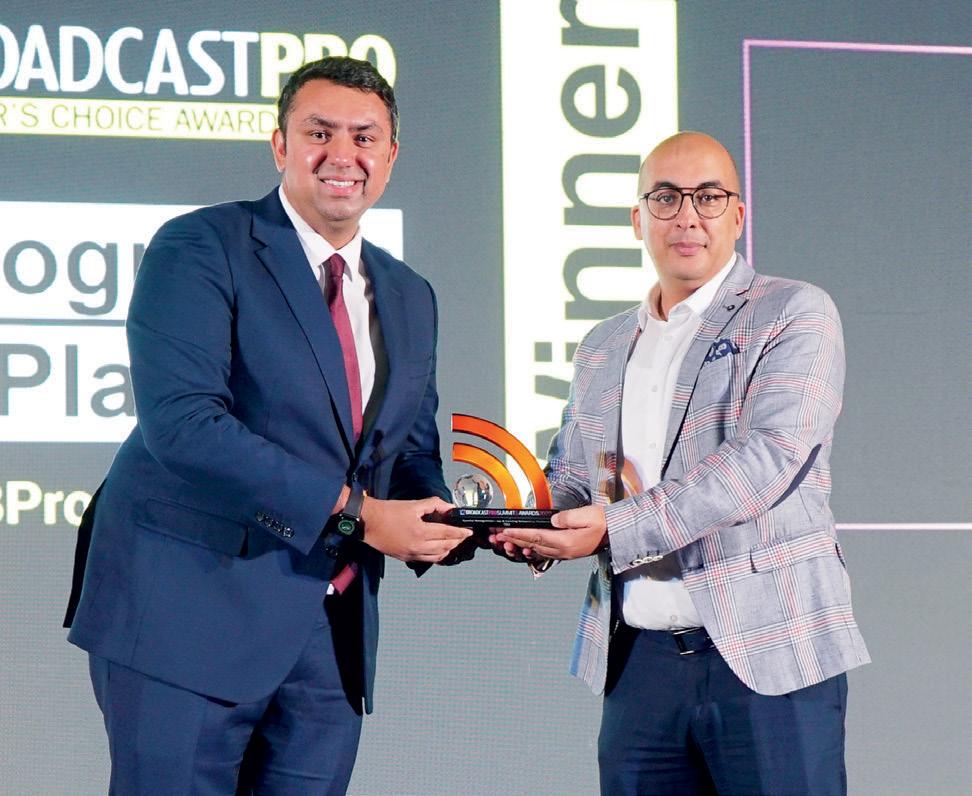
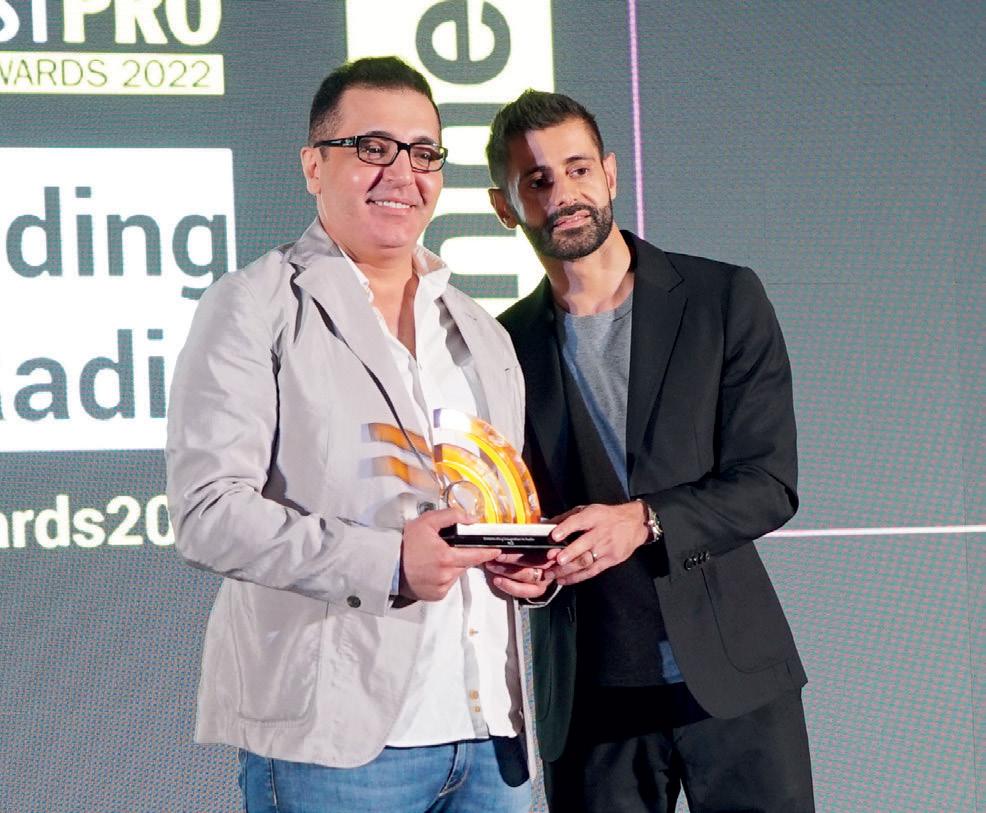
Eagle Films Middle East LLC
It is one thing to be committed to producing good stories, it is another to release hit after hit. Eagle Films Middle East LLC has done the latter with flourish. More importantly, it has produced drama series that are attracting audiences outside of the local market. For crafting powerful stories, developing a fantastic portfolio of content for the region and pushing the envelope with each new production, and for raising the profile of Arabic drama series and films in the region, Eagle Films Middle East LLC deserved this accolade. Pictured with the award is Bilal Dayani, Chief Operating Officer, Eagle Films Middle East LLC.
SPECIAL RECOGNITIONUP & COMING STREAMING PLATFORM TOD
The new kid on the block, TOD, a part of the beIN Media Group, already provides an integrated and personalised experience for viewers. With the World Cup in Qatar taking place now and beIN owning several premium sports assets, TOD has had to quickly shape up and deliver a fairly efficient and seamless experience as its streaming partner. It has an interactive design for sports buffs with OPTA integration and incorporates live stats updates during football matches. We see in TOD a rising star. Mayur Bhanji (l), Head of Corporate Affairs and Communications, received the award from Razik Zaghlouli, Regional Sales Director at Ateme.
40 | www.broadcastprome.com | December 2022 PROAWARDS
Satellite Award
SATELLITE SOLUTIONS PROVIDER OF THE YEAR e&
RAK Earth Station from e&, which operates four tier4 teleport facilities that are fully interconnected and geographically diversified, was recently chosen by various international satellite operators to host their gateways because of its strategic location, which enables operators and service providers to control and monitor their satellite systems. The interconnectivity that RAK teleport has with around 19 subsea and terrestrial international cable systems connecting East to West helps customers achieve the global reach they want but also the diversity needed to ensure an uninterrupted flow of traffic during planned and un-planned outages. This is a state-of-the-art teleport that offers a welcoming regulatory environment, superior connectivity, excellent support services and a wide angle coverage that covers the complete south satellite arc for GEO services. For this award-winning facility, e& emerged the winner. Pictured with the award is Hassan Ali Salim Al Owais, Director Product Management – Voice Mobility & Satellite, e&.
Honorary Award
OUTSTANDING LEADERSHIP IN BUILDING THE UAE MEDIA ECOSYSTEM
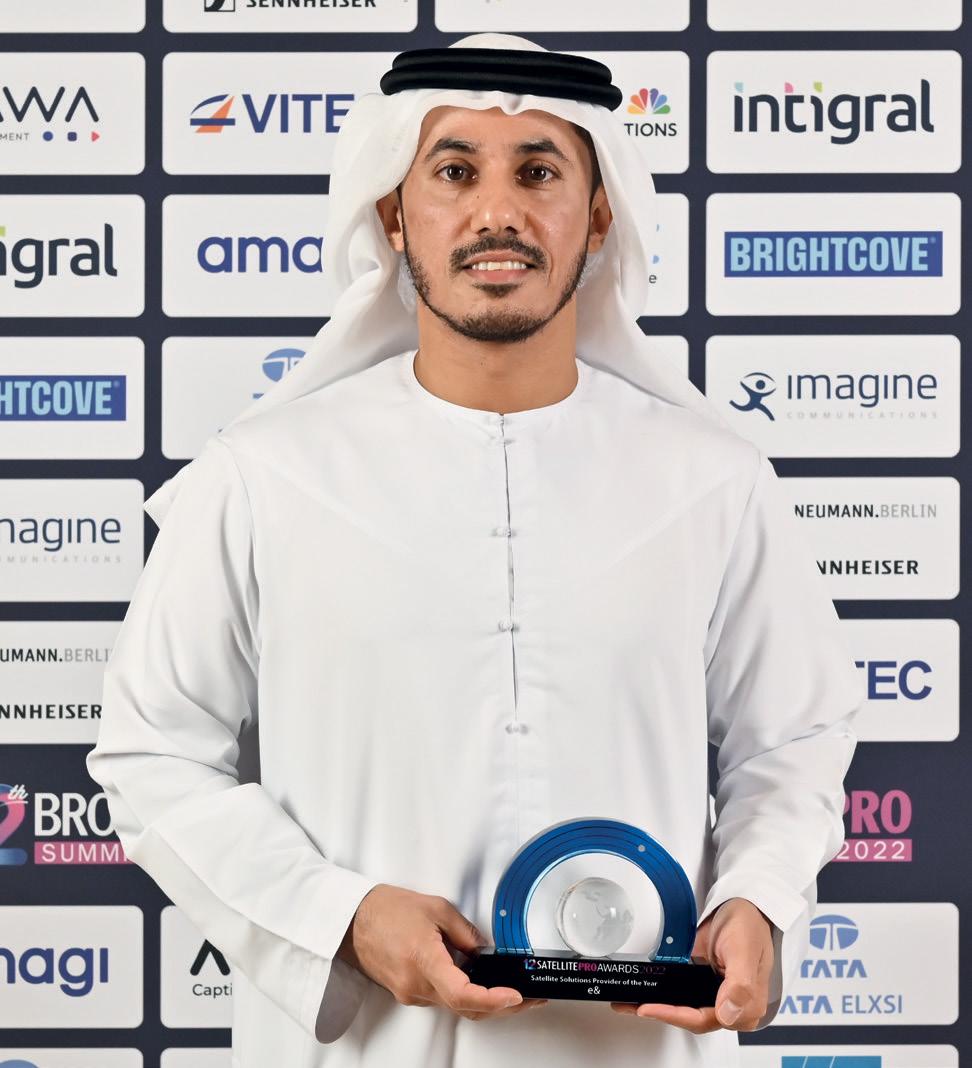
Majed Al Suwaidi, Managing Director, Dubai Media City, Dubai Studio City and Dubai Production City
As the global economy passed through one of its darkest hours during Covid-19, a few leaders stepped up their efforts to support the local business community. Majed Al Suwaidi, who has helmed Dubai’s media business districts for the last seven years and has been with TECOM for more than 16, shone with new initiatives. He helped develop existing ones further to suit the new needs of the market. in5, a dedicated platform for emerging talent that supports innovation and entrepreneurship across TECOM’s business parks, for instance stepped up its workshops and training programmes. Likewise, the GoFreelance initiative, which Al Suwaidi led, has helped several independent creatives to pursure their dreams unhindered by huge investment constraints.

41 December 2022 | www.broadcastprome.com | PROAWARDS
MAGIC BUTTONS & BUSTING MYTHS: DEBUNKING THE MYSTERIES OF VIRTUAL PRODUCTION
Virtual production, when wielded with the right intention and proper understanding of its true might, is an unprecedented advancement in the content creator’s arsenal, says Matthew Collu in part seven of this series


42 | www.broadcastprome.com | December 2022 PROVIRTUALPRODUCTION
Filmmaking, over the course of its hundred-year history, has evolved exponentially with each passing decade, from different hardware techniques that changed how we captured the story to directorial and visual literacy that evolved our perception of the story, and more recently, software that has rearranged the very DNA of bringing effects to life during the story. The art form has seen more than its fair share of revolutionary and innovative storytelling solutions. And furthermore, it has seen misconceptions on how those solutions can be applied effectively. Naturally, until a workflow is fully adopted and accessible to most of the industry, access to that information can be a little tricky. No workflow innovation better represents this than the whirlwind that is virtual production. Given how pertinent it was during the pandemic, it's understandable that its true application and power slipped through the cracks as wonderment and excitement shone through. So this time around, the aim is to not only further demystify this big, wide virtual production world but also perform some muchneeded myth-busting to improve your understanding ten-fold.
I’ll do my best to break it down within a digestible word count. When a new solution arrives on the scene, the unfortunate reality is that the excitement of its arrival usually clouds the truth of its use case. Some even confuse what it can do with what they wish it could do. Virtual production is no exception. Before we move headlong into debunking, we need to first establish that virtual production is a tool. Much like any workflow adopted to effectively tell a story, and much how you wouldn’t use a hammer to screw in a lightbulb, everything has its place and its effective environment.
That established, we come to our first common misconception: Replacement. Just as CGI doesn’t outright replace practical visual effects and green/blue screen doesn’t outright replace physical sets, virtual production doesn’t outright replace any established tool in the filmmaker’s tool belt. Its many incredible efficiencies appear when it’s the right tool for the job.
A great example is car commercials. Having control over the entire environment in the comfort of a studio makes shooting close-ups, turntables and interiors a dream. Having the capacity for a multitude of set-ups, with the final image merely being what comes through the camera on shoot day, is certainly one heck of a triumph. But what about movement?

Everyone loves to see how the car looks ripping down an empty road at high speeds, and that isn’t something a few hundred LED panels can facilitate, despite their incredible capabilities. Despite what virtual production has allowed through its adoption in this case, it’s not a cure-all. The dialogue gets muddy when discussing its application.

Streamline elements of production: it certainly does this, but it does not replace all else.
Thinking of virtual production as a one-stop shop is one of the largest myths I’ve encountered; it causes a lot of production confusion if not addressed or debunked before principal photography.
This mindset brings us to our second myth, the one most synonymous with a creative’s overflowing excitement about its potential capabilities, woven together with lack of access to the proper education on its practical capabilities. The myth that virtual production can do everything. Or rather, be applied to everything.
Remember the hammer analogy I used earlier? How many
43 December 2022 | www.broadcastprome.com | PROVIRTUALPRODUCTION
If you want to show a car ripping down an empty road at high speed, you need to schedule a practical shoot day on the road; it can't be done in virtual production.


problems are solved if they are attempted with only a hammer, rather than the tool intended, or even a combination of tools? That’s this myth in a nutshell. Think of a production as a blueprint to a solid finished product. Each element of that blueprint requires tailor-made, established solutions to bring the entirety to actuality – plumbing, electrical, etc. All this serves the overarching goal of completing the entirety of the project. This can be applied to the workflows that come together to finalise a production – different solutions coming together in service of a final task.
Our hypothetical car commercial still needs a practical shoot day with the car on the road, so doing the entire wiring of a building with nothing but a hammer is not advisable. Virtual production is a workflow solution that shines when used in its designed context, even more when the intended content leverages its strengths and fully understands what it does best, rather than trying to retrofit things.
Virtual production can do a lot of incredible things and solve a multitude of production problems, but it still may not solve them all. Assuming that it can, however,
can seriously hurt your introduction and execution, which is ultimately the opposite of what creatives should feel when faced with its amazing efficiencies. This third and final myth on the chopping block has been floating around since the very first showcase hit the masses, and everyone could watch the YouTube video on repeat until their browser crashed: This is the unfortunate idea that virtual production removes all the cost of post-production. As touched on earlier, it doesn’t replace any facet of production, including post-production. Instead, it’s a shift in where and when that cost is allocated.
If a team of artists and creatives aren’t adding in that environment after principal photography, then it has to come from somewhere to be used during principal photography, right?
Asset generation in this workflow is still extremely important, but moved further up the pipeline. This isn’t to say that the workflow can’t mitigate costs – it totally does, and it’s awesome. However, the idea that it removes the cost of having incredibly talented artists do what they do best isn’t accurate in the slightest.

The understanding that it’s more costefficient is correct, though the reasoning as to why is slightly off-base. We’ve touched on how virtual production saves money in earlier parts of this series, so
I encourage you to see for yourself where the true cost efficiencies are.
Virtual production, used in its designed context to carry out its designated task and solve the problems it was created to solve, produces great results. This workflow truly shifts the tectonic plates of filmmaking. But sift carefully through the dust cloud of myths and mysteries before taking the leap.

Matthew Collu is Studio Coordinator at The Other End, Canada. He is a visual effects artist and cinematographer with experience working in virtual production pipelines and helping production teams leverage the power of Unreal Engine and real-time software applications.

44 | www.broadcastprome.com | December 2022 PROVIRTUALPRODUCTION






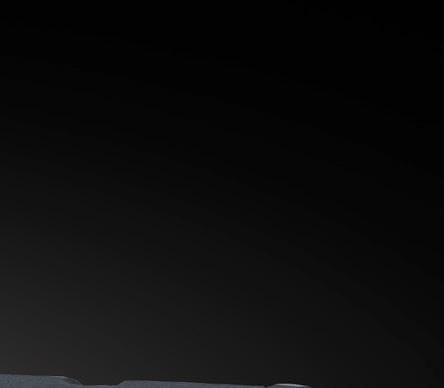

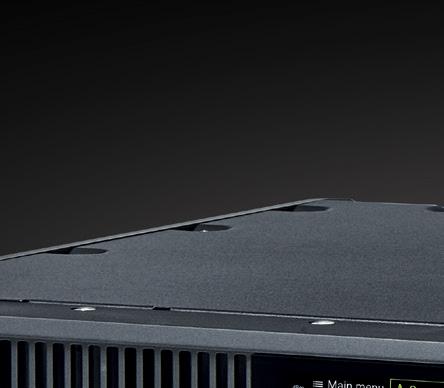
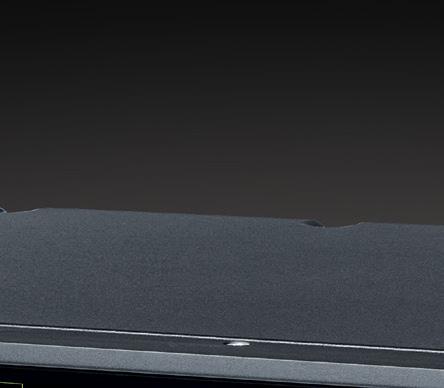
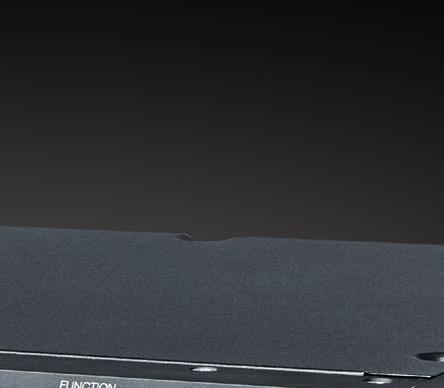

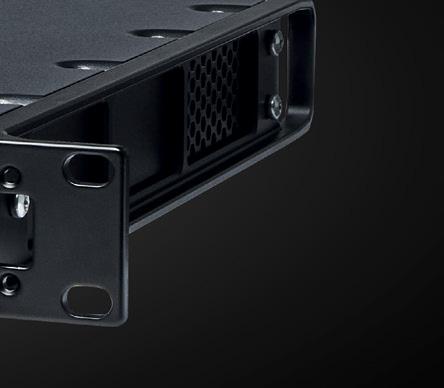

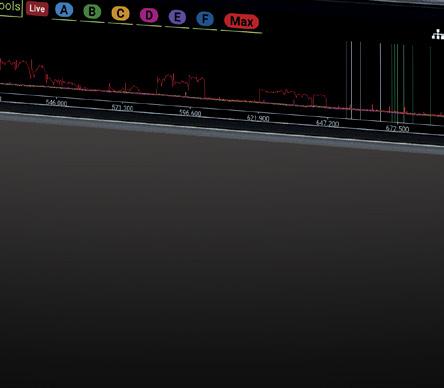
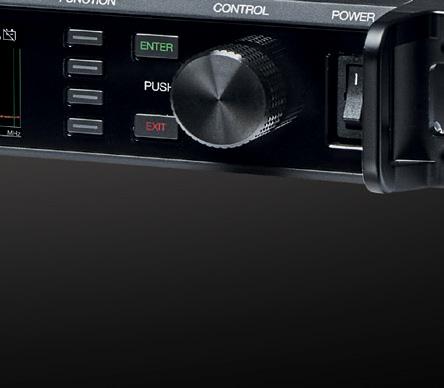












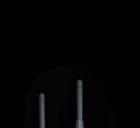



















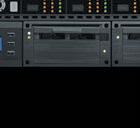
















DIGITAL AD600 DIGITAL SPECTRUM MANAGER ANALYZE. MONITOR. MANAGE. REAL TIME. Next-generation. Shure Axient Digital AD600 Digital Spectrum Manager delivers real-time, wide-band spectrum scanning and monitoring from 174 MHz to 2.0 GHz, spectrum analysis, and frequency coordination in a single rack. Discover more at shure.com/ad600. REAL TIME. The AD600 is an essential addition to your Axient Digital professional audio setup. All information and specifications are subject to change. © 2022 Shure Incorporated SCAN FOR FREE DEMO
Gone are the days when AR and VR were something only avid gamers talked about. As the technology evolves, it is providing better visuals which make for more realistic experiences, including face sensors to share your emotions or enhance your senses with spatial audio and haptic devices. Interest from both the industry and end consumers is on the rise, and the range of potential use cases has broadened massively.
Before we get to the point where the metaverse will have an impact on our everyday lives, it will need to develop and become more accessible. It is likely that video service providers will play an important role in this, and video streaming may even be the trigger that nudges the metaverse over the tipping point.


The Evolution of the Metaverse
by creating and delivering virtual experiences like these. And they could well serve as the doorway to the metaverse that is needed to help it appeal to a wider audience.

The technology
travel, consumers rated attending a live concert or gig, playing video games and going to the movies as top interests.
The metaverse has the potential to have an impact on almost every aspect of our lives, from socialising and gaming to learning and even healthcare appointments. The desire for interaction and engagement is more evident across some verticals than others, so it makes sense that those use cases that sit most comfortably with the metaverse will be ahead of the curve.

The

role of video Today, consumers don’t just watch a video but expect interaction, whether through social watching experiences, shoppable content or personalisation. Take this forward a step, and the next level is an immersive video experience in the metaverse that uses VR and AR technology. Music fans could buy VIP tickets and watch their idols perform at sell-out concerts. With a virtual backstage pass, fans could experience the buzz and even explore stars’ dressing rooms and other normally inaccessible areas. Likewise, fashionistas could enjoy sitting frontrow at their favourite designer’s fashion show and could even try on outfits afterwards to see how they look.
The video industry has the power to meet consumer demand for increased engagement and interaction
We can access the metaverse without the use of special equipment. Most Gen-Zers already use their mobile devices to engage in virtual gaming worlds such as Roblox and Fortnite. However, these use cases do not have wide enough appeal to engage a wider audience. The technology needed to drive the metaverse forward is already out there, and is becoming accessible to the average consumer. Lots of the big technology brands already have consumer VR headsets on the market, such as Meta Oculus Quest, Pico 4, Sony PlayStation VR2, HTC Vive Pro 2 and HP Reverb G2. There are also some great AR glasses already in distribution, such as Nreal Air.
In addition, haptic technology will dramatically change users' interaction with VR and the metaverse by enabling them to experience it on a physical level. Through the use of forces, vibrations or senses, audiences can get to feel what it is like to wear a certain piece of clothing or to actually be in a stadium full of other people.
The use cases
According to a YouGov survey, the number one metaverse activity that US and UK consumers are interested in is travelling to a destination. Imagine being able to visit, explore and experience one of the most expensive hotels in the world without having to pay the $45,000 a night fee. After
For example, most sports fans have an innate desire to engage with teams, players and other fans. In the metaverse, they could experience what it is like to be on the pitch with other fans while their favourite team has a training session. Fitness is another vertical that fits well with interaction and engagement, so it is not surprising that companies such as OliveX, Playinnovation, Les Mills and Peleton are already using immersive technology to enhance the customer experience.
Metaverse expansion
The metaverse has the potential to be a true disrupter, changing how we connect with each other on multiple levels. But before this, there needs to be widespread user engagement across multiple verticals. Video can play a crucial role in stimulating the necessary wider engagement by creating immersive and interactive experiences. Video providers can get ahead of the competition by using existing AR/ VR technology to create immersive experiences that meet users’ needs.
Somolinos is Solutions
Strategist & XR Lead at Accedo.

46 | www.broadcastprome.com | December 2022 PROGUEST
José
“The metaverse has the potential to be a true disrupter, changing how we connect with each other on multiple levels”


























































































































 -
-

































































































































